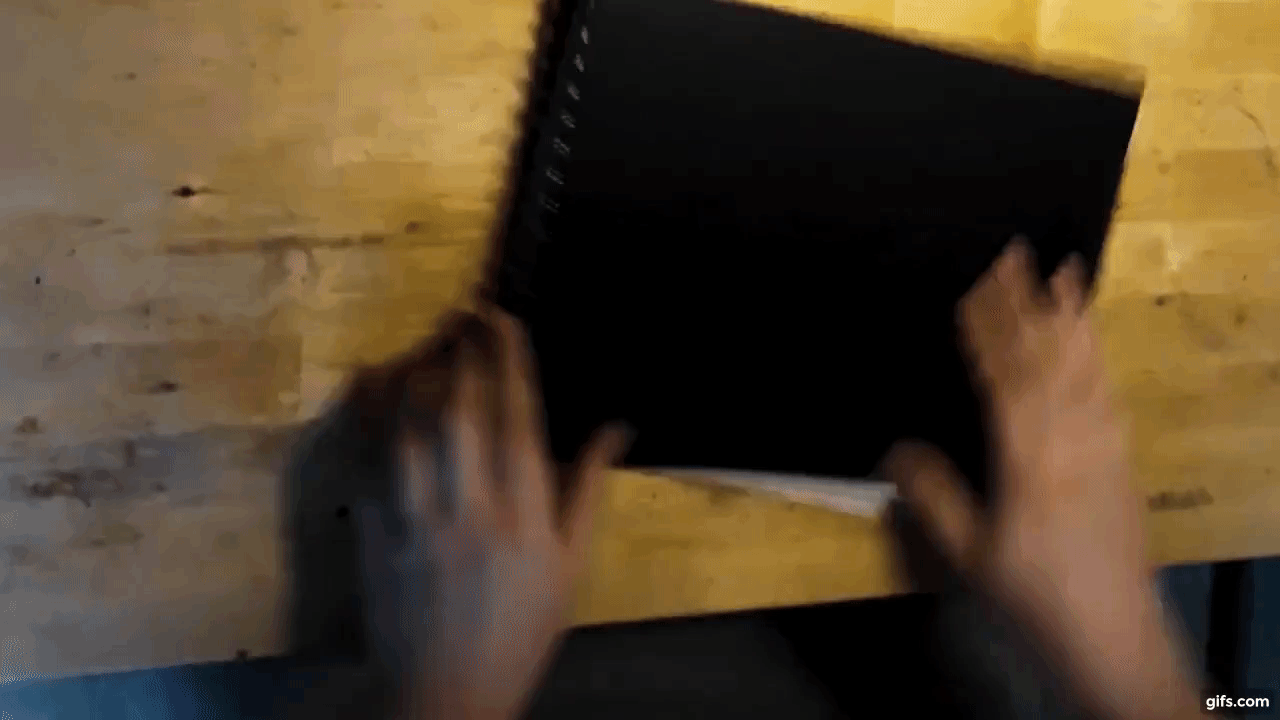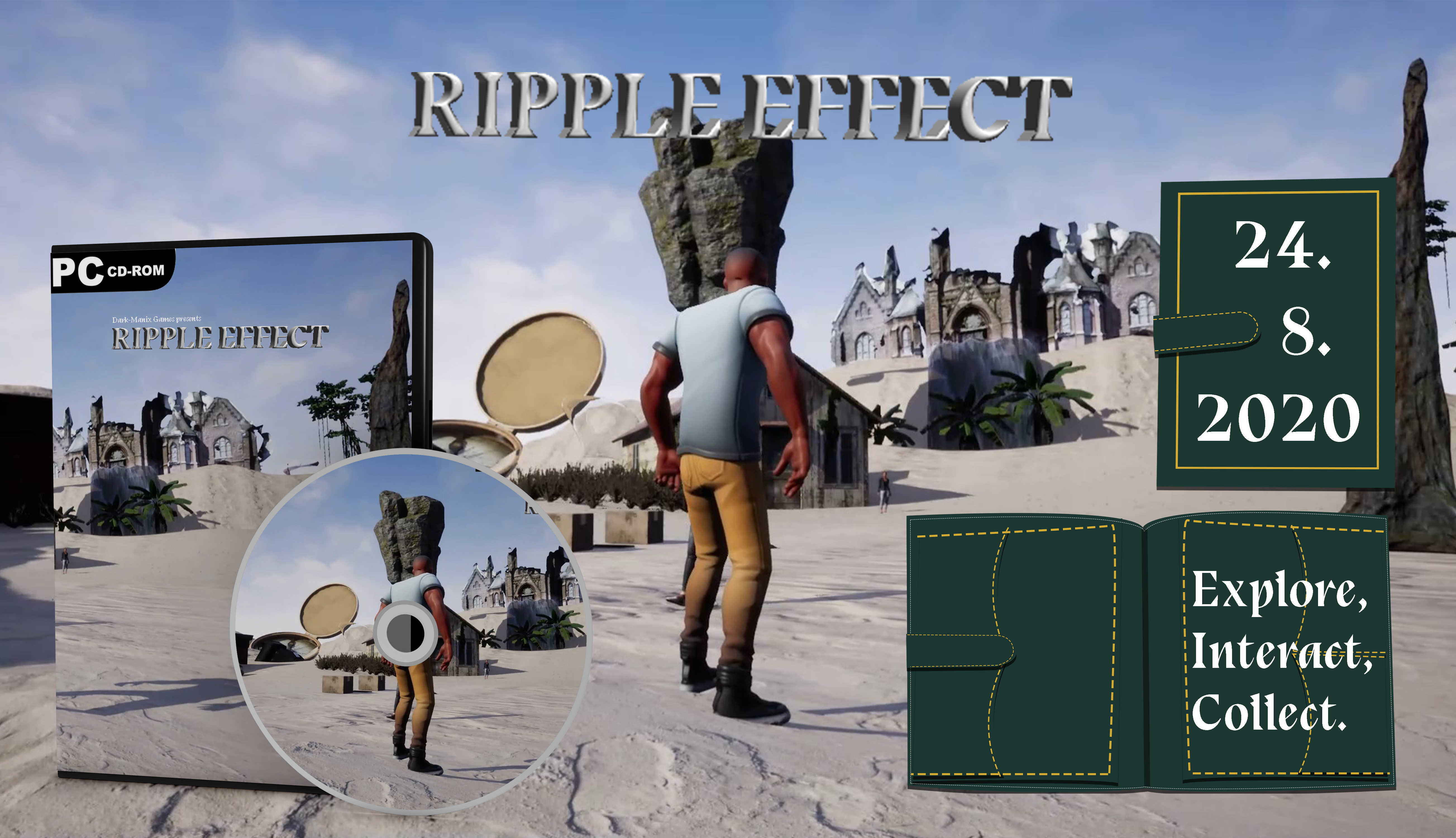A briefcase is a narrow hard-sided box-shaped bag or case used mainly for carrying papers and equipped with a handle. This is a briefcase from The Democratic Confederation of Labour (CDT). It is a national trade union center in Morocco. It was established in 1978. Traditionally, the CDT was allied with the Socialist Union of Popular Forces (USFP), but in 2002 the union broke its ties and subsequently, secretary general Noubir El Amaoui created his own political party. This artefact was donated by the KMAN.The KMAN was a national organization with the objective of defending the interests of Moroccan workers in the Netherlands.
| Tag | Data |
|---|---|
| IISG Call Number | IISG BG K21/62 |
| Physical Description | Green leather briefcase with golden embroidery |
| Type | Object |
| Medium | Briefcase |
| Materials | Leather, Fabric |
| Date | 1997 |
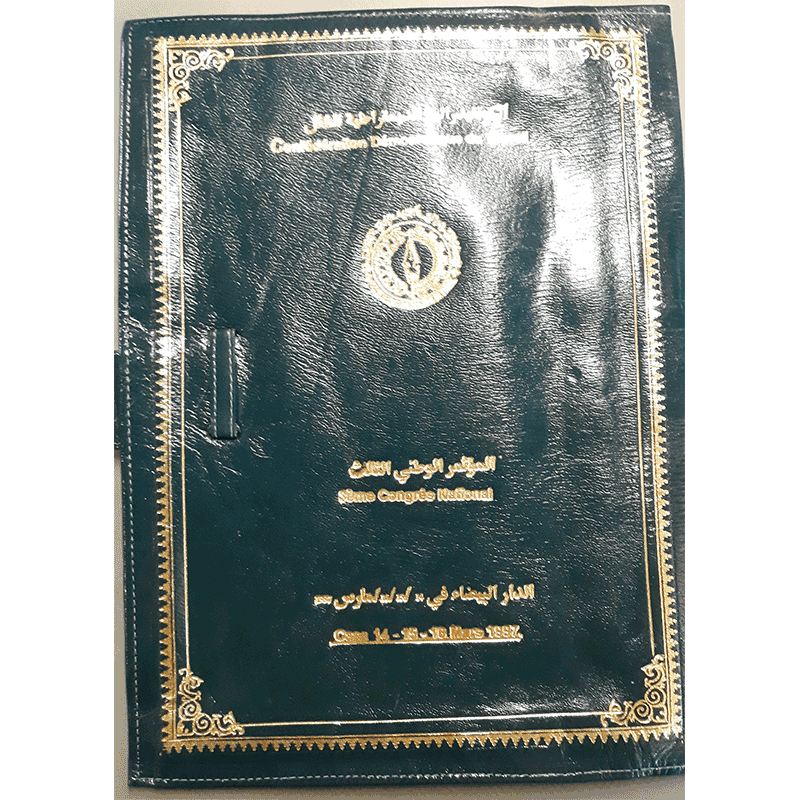 |
Green leather briefcase with golden embroidery. A leather belt serves as a lock to keep the briefcase close. Embroided on the cover, centered, is written "Democratic Confederation of Work" in arabic then under in french. Closer to the middle of the page, the logo of the CDT. Under is written "3rd National Congress" in arabic then in French. Under this, is written "Casa 14-15-16 March 1997" in arabic and then in french. |
| The inside of the pockets is a blue fabric with fine embroidery. |
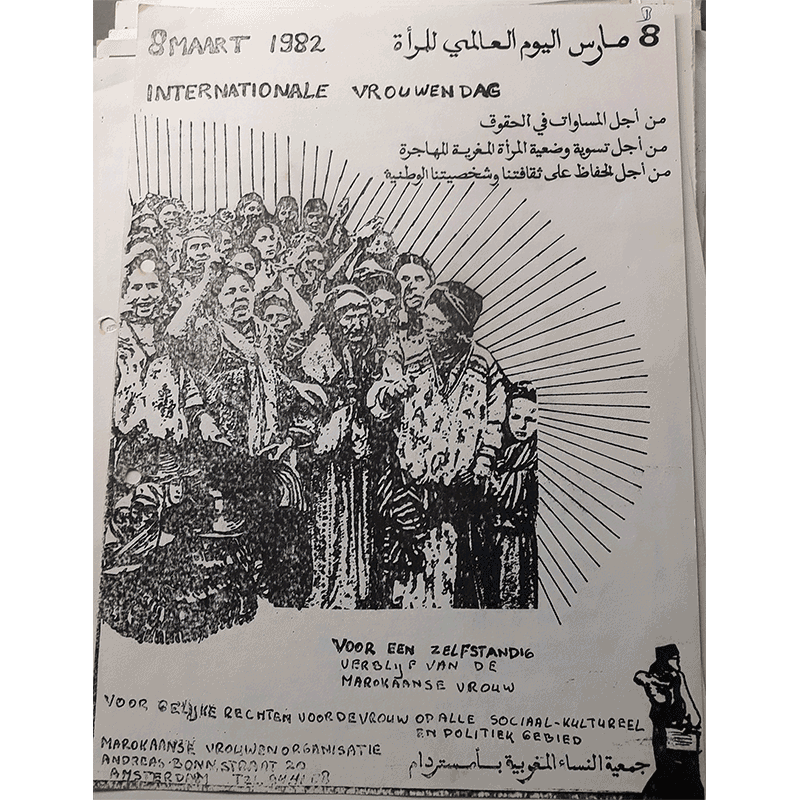 |
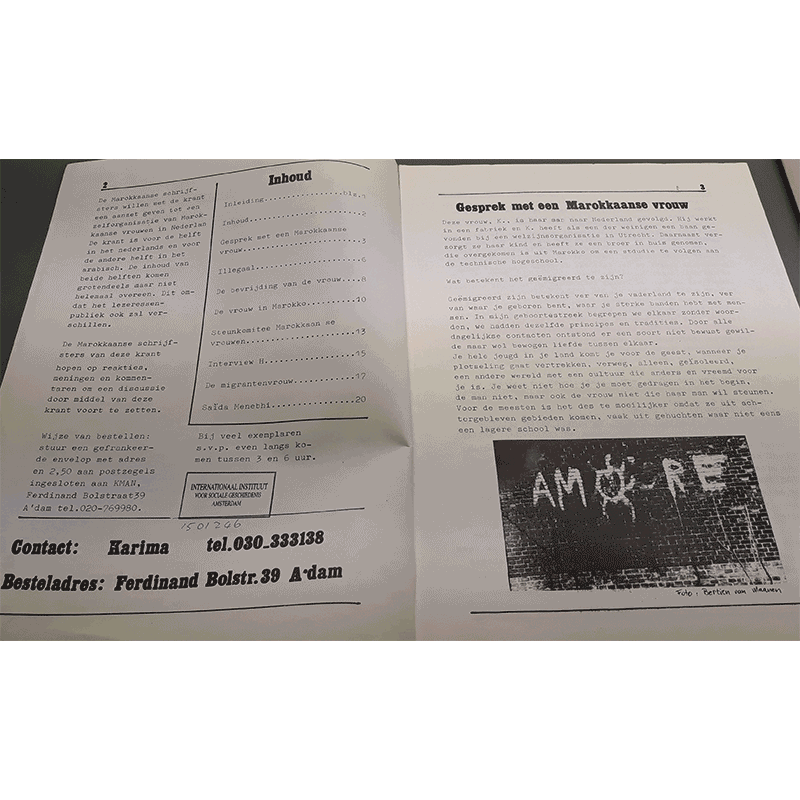 |
|---|---|
The Committee for Moroccan Workers in the Netherlands was established on 13 September 1975 at an action meeting of Moroccans in a squatted warehouse on Bloemgracht in the Jordaan, a warehouse in which many action groups, including the Palestinian Committee, Amnesty International and BAK-: Jordaan, had elected their domicile at the time. Prior to the meeting, a demonstration had been organized by a joint venture of the Moroccan Illegal Committee, the Dutch-Turkish Workers' Association Amsterdam (HTIB), the Surinamese LOSON and the Foreign Workers Collective. The demonstration focused "against the Regularization Measure and against the discriminatory action of the Aliens Police in Amsterdam." Around 600 workers visited the Aliens Police, the Social Services, the Employment Office and the City Hall where a petition was offered to Mayor Samkalden. At an action meeting of Moroccans in the evening after the demonstration, it was decided in the presence of around 150 people to set up the Committee of Moroccan Workers in the Netherlands (KMAN). A board was chosen and a program was formulated. According to the statements of this meeting, the KMAN had to become an "autonomous and democratic mass organization" with the objective of defending the interests of Moroccan workers in the Netherlands. The KMAN was a national organization, but also had local departments and divisions, such as the KMAR in Rotterdam and the AMMU in Utrecht.
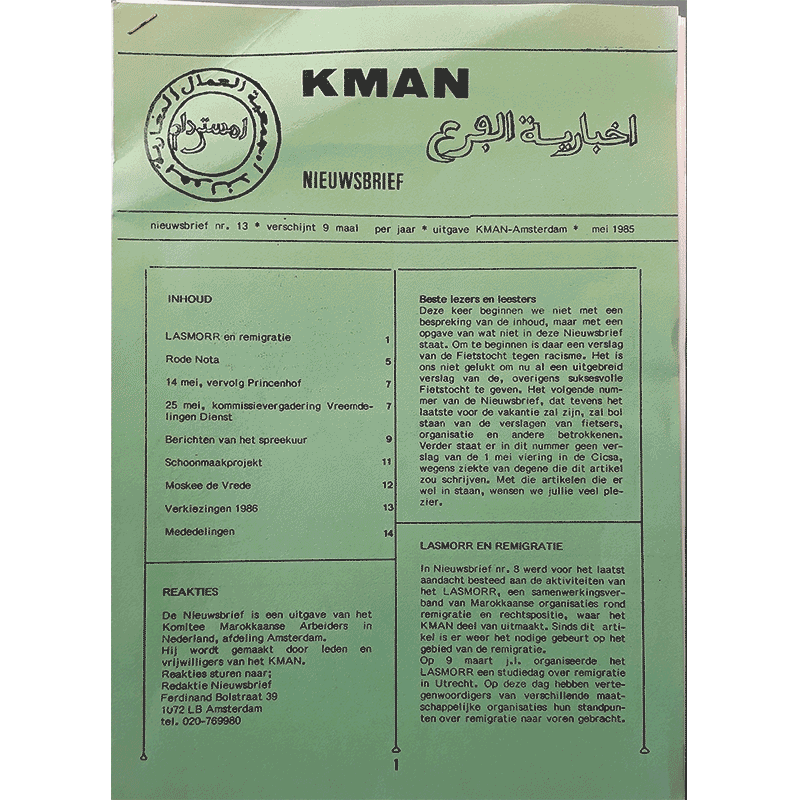 |
 |
|---|---|
Quite soon after the establishment of the KMAN, the first KMAN newspaper appeared, called The Moroccan Worker. The intention was to provide a two-monthly publication. It turned out to be difficult to realize this over and over again. The KMAN newspaper did not appear in 1982. Since the beginning of 1983, an edition of the newspaper appeared again irregularly. The print run was always quite large, 5,000 to 7,000 copies. One half of the newspaper was in Dutch, the other in Arabic. The content of both parts was not the same, sometimes they were separate articles, sometimes translations or adapted versions. Costs of the newspaper were covered from the sale and from subsidies from the NOVIB. Distribution took place in-house through sales at activities, in the building, through friendly organizations, kiosks and the like. Theme numbers were sent to special organizations and were sometimes taken by them in large numbers. For example, 1500 copies of a themed issue on education were purchased by the ABOP. Up to and including 1988 29 editions of the "Moroccan Worker" were published. In 1990 the KMAN again published a more modest edition: the KMAN bulletin. Local departments often made their own newsletters. In 1995 the first two issues of a new edition of the KMAN entitled MigrantBurger were published [1]
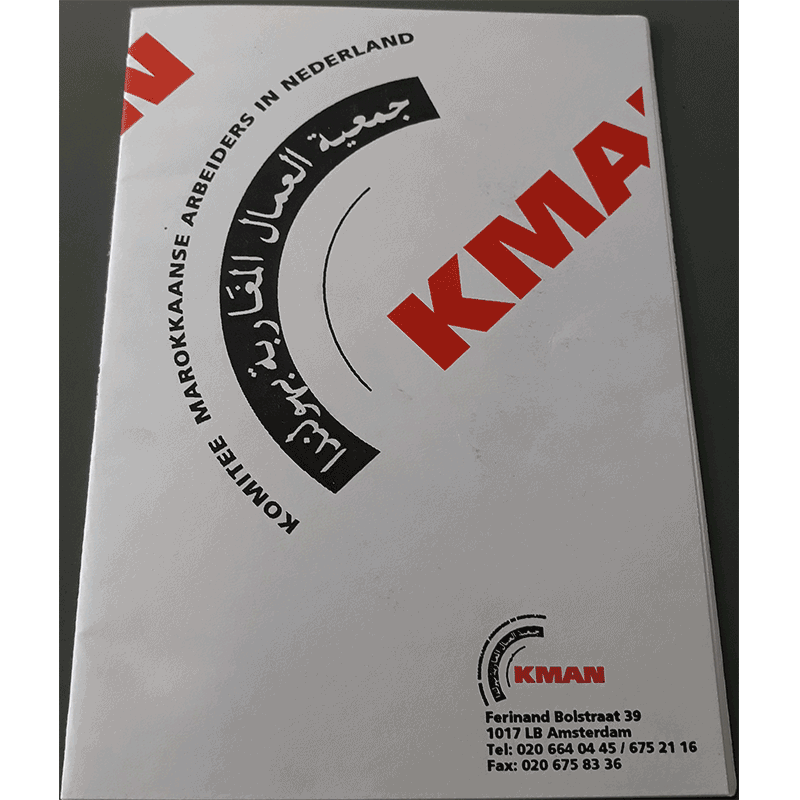 |
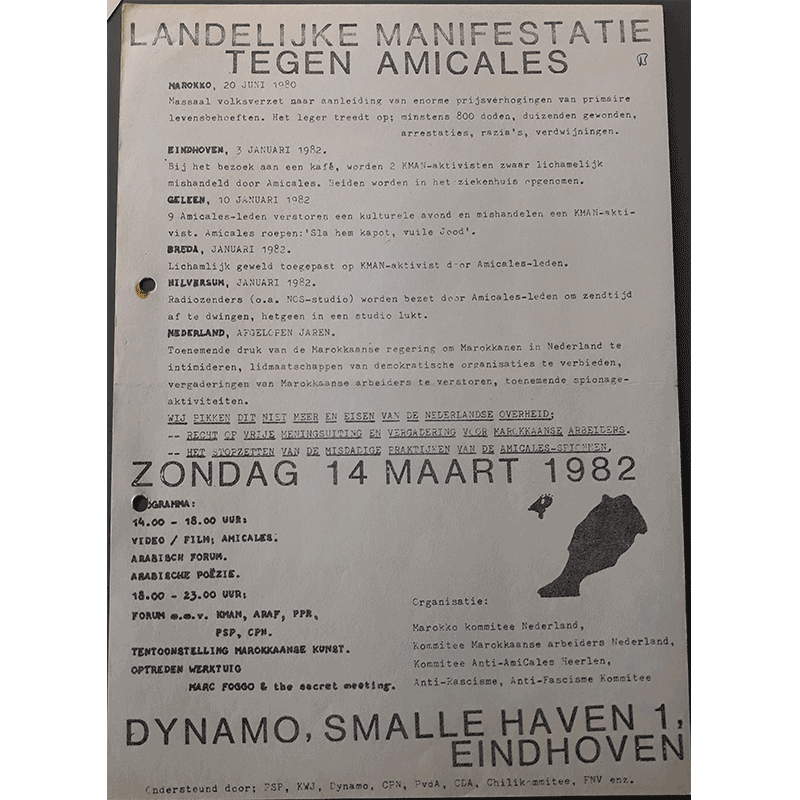 |
|---|---|
The Amicales were known for taking active and often violent action against "harmful influences". The Amicales were also active in reporting Moroccans in the Netherlands who were involved in demonstrations, the KMAN, or other elements that were seen as undesirable. On 23 April 1983, for example, the consul received a letter from the Amicales. The Amicales had opened a new office a few days earlier. Neighborhood organizations and the KMAN were present at this opening to demonstrate. The Amicales then found out eight names of Moroccan protesters and mentioned them in the letter. People who went against the hairs of the Amicales and the Moroccan government were subsequently made life miserable. A good example of this is Abdou Menebhi, who has had to wait for years for his passport application to be fulfilled. The application was made in 1979. In 1982 even the consul in the Netherlands asked to grant the application. Only in 1994 did he actually get the passport. Physical repression was also not shunned. For example, fighters appeared during the Ajax-Morocco football match in 1976. In January 1982, KMAN members were also physically attacked twice. Once in a cafe in Eindhoven, again on a cultural evening in Geleen. There was also a raid in 1981 during a hunger strike in the Moses and Aaron Church in Amsterdam. Finally, the return to Morocco for KMAN members and people who worked with the KMAN was also very difficult. In 1978 one of the 182 hunger strikers was arrested and detained for several weeks. Later in 1984, Amine el Mouaden, KMAN and ABOP member, was arrested, detained and tortured for several weeks. These names were most likely passed on by the Amicales.
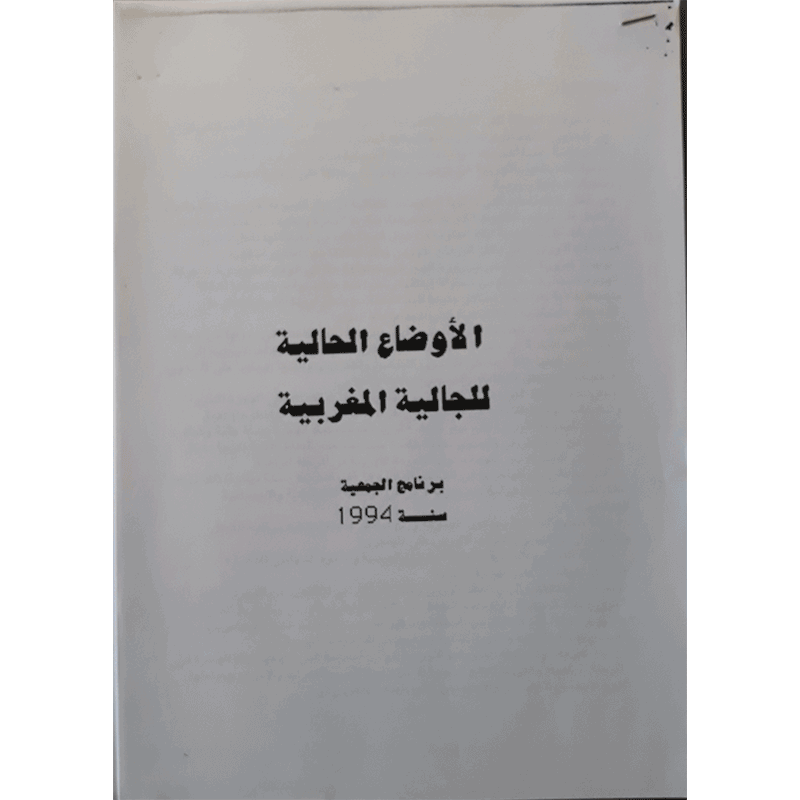 |
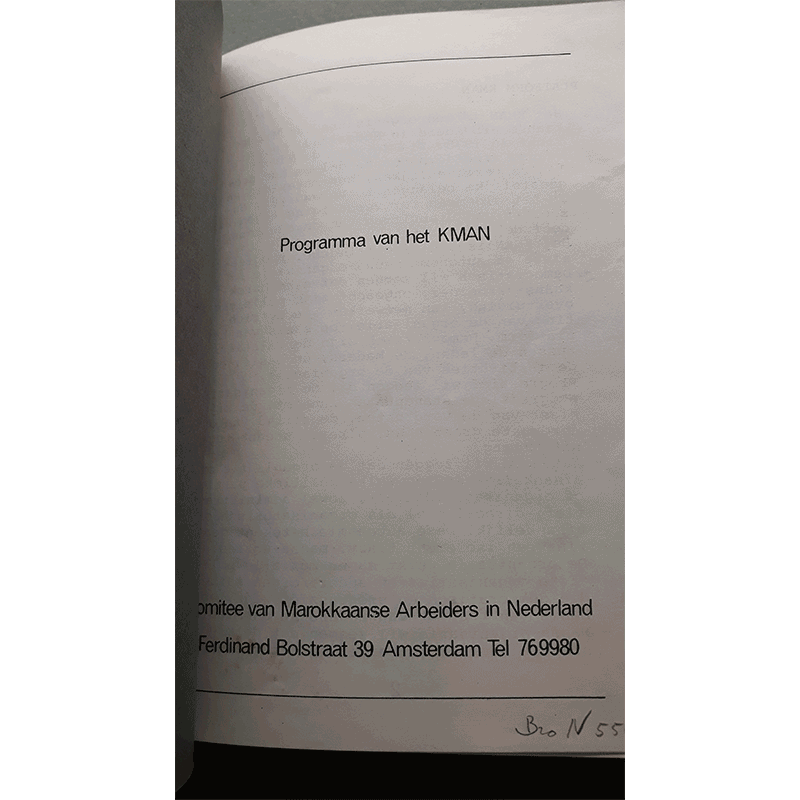 |
|---|---|
For many traditional self-help organizations, including Moroccan Dutch self-help organizations, these policy changes meant that in the 1990s it became more difficult in many places to receive funding for integration-oriented activities, such as social welfare services delivered through office hours. The job pool scheme and later the WIW scheme made it possible for some of the organizations to continue to provide this type of aid for a while. Because structural forms of subsidy were increasingly being replaced by project-based subsidies, many self-organizations had to focus more and more on activities that local authorities or funds gave priority in order to obtain sufficient funds. Those were not always the activities the supporters needed. New organizations that emerged in the late 1990s included the Euro-Mediterranean Center for Migration & Development (Emcemo), which emerged from KMAN after it organized a conference on migration and development in Tangier, Morocco, in 1996. In the early years, Emcemo's activities focused strongly on Euro-Mediterranean cooperation, but over the years the emphasis has shifted to the Netherlands. Emcemo, with former KMAN foreman Abdou Menebhi as the driving force, is committed to emancipation and participation, equal participation in the society of all Dutch people and against racism, radicalization, anti-Semitism and homophobia. Emcemo has also paid a lot of attention to Islamophobia for the past ten years and is the founder and driving force of the Collective against Islamophobia and Discrimination (CTID).
Using sound and visuals to create a digital fac-similé, that can be opened and display transcoded content from the archive edited into a narrative that follows the question: How does a social movement dies? The resilience of this archive relies on the diversity of transcription, from image to sound, from picture to written description or drawing, etc. By creating a narrative, linking the different elements of this archive represented by the briefcase, the goal is to explain the context and the signification of it and its value, either as a document carrier or a reproduction fac-similé, and to keep its primary function but also giving it a new symbolic one as an archive in itself.
| Transcoding | 1 |
|---|---|
| Purpose | Recreate a feeling of the original material through sound for non physical consultation of the items |
| Medium | Sound |
| Result | Ambiant Sounds of leather and paper folding and bending |
Leather is a durable and flexible material created by tanning animal rawhide and skins. The most common raw material is cattle hide. It can be produced at manufacturing scales ranging from artisan to modern industrial scale.
Leather is used to make a variety of articles, including footwear, automobile seats, clothing, bags, book bindings, fashion accessories, and furniture. It is produced in a wide variety of types and styles and decorated by a wide range of techniques. The earliest record of leather artifacts dates back to 2200 BC.
Many forms of artificial leather have been developed, usually involving polyurethane or vinyl coatings applied to a cloth backing.
How to transcode leather? How do you describe it? Its texture, its feeling, its sound.
For this, i assembled different mediums and recorded them many times on differents settings, such as they can be assembled to give the feeling of a spaciality and not just a sound effect.
Audio: The Audio files can be found here
| Transcoding | 2 |
|---|---|
| Purpose | Create a narrative linking different documents of the archive as a story |
| Medium | Sound/Writing |
| Result | Audio Storytelling/Reading track |
In Mande society, the jeli was an historian, advisor, arbitrator, praise singer (patronage), and storyteller. They essentially served as history books, preserving ancient stories and traditions through song. Their tradition was passed down through generations. The name jeli means "blood" in Manika language. They were believed to have deep connections to spiritual, social, or political powers. Speech was believed to have power in its capacity to recreate history and relationships.
In the same idea, i want to use speech to recreate the context of this archive.
Translation of extracts of documents to english. Recordings of thoses translation as a story.
For this, i organized the content i gathered from the archives by date and type of medium. Most documents are either written in arabic, dutch or french, so i translate extracts of the french and dutch documents to english for accessibility. From there I edit those content into the narrative to give context to them and deepness to the statement.
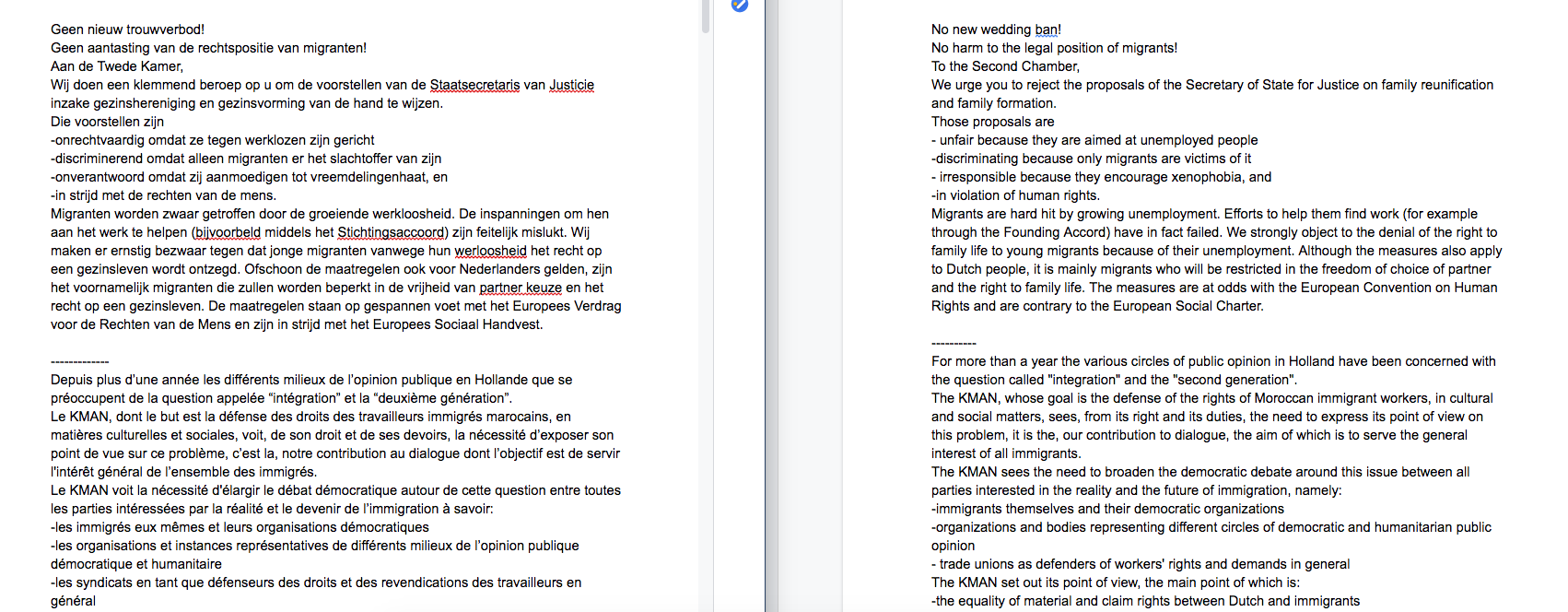 |
 |
|---|---|
 |
 |
Audio Playlist: The Audio files can be found here
| Transcoding | 3 |
|---|---|
| Purpose | Create a narrative linking different documents of the archive as a story |
| Medium | Unreal Engine |
| Result | Video Game |
I want to re appropriate the story of the KMAN to convey a more "general" themathic statement, around a storytelling element. For this i decide to develop a video game where the main mechanic is to collect items. The environment will be a bit surrealistic but taking elements of real life.
I first wrote a script of a dialogue which would be the main story telling element.
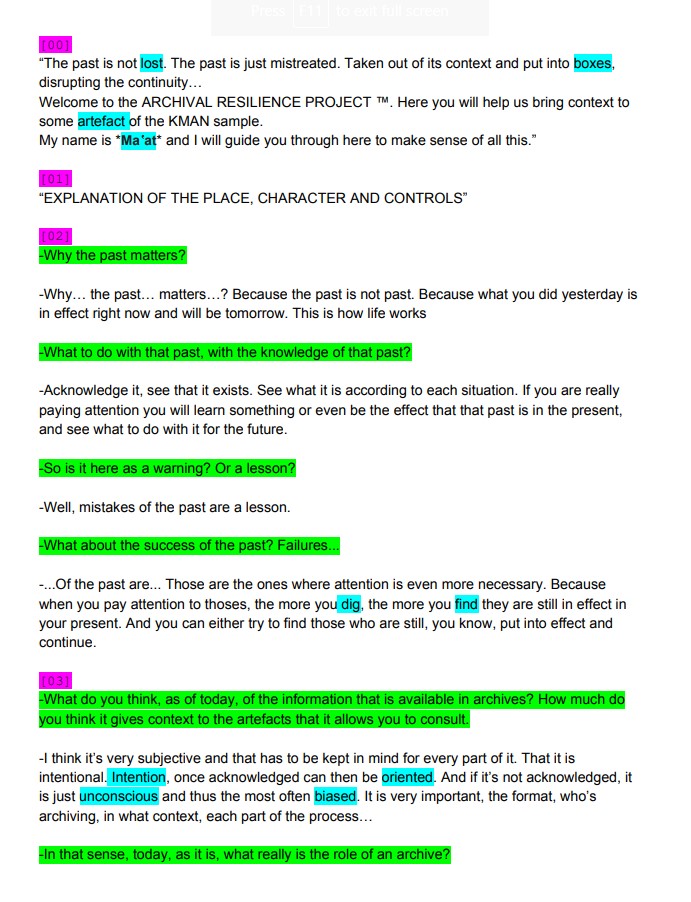 |
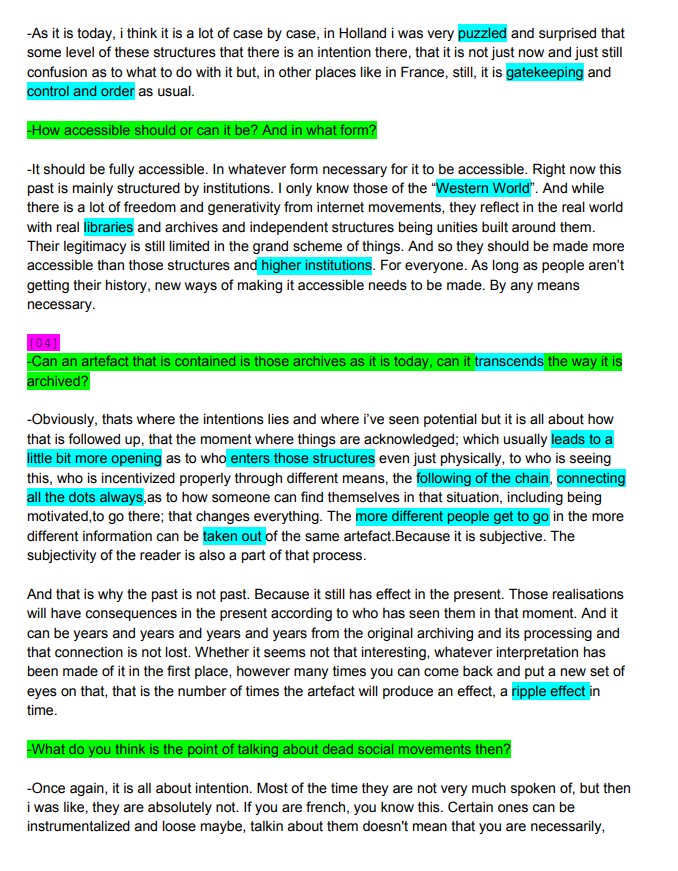 |
|---|---|
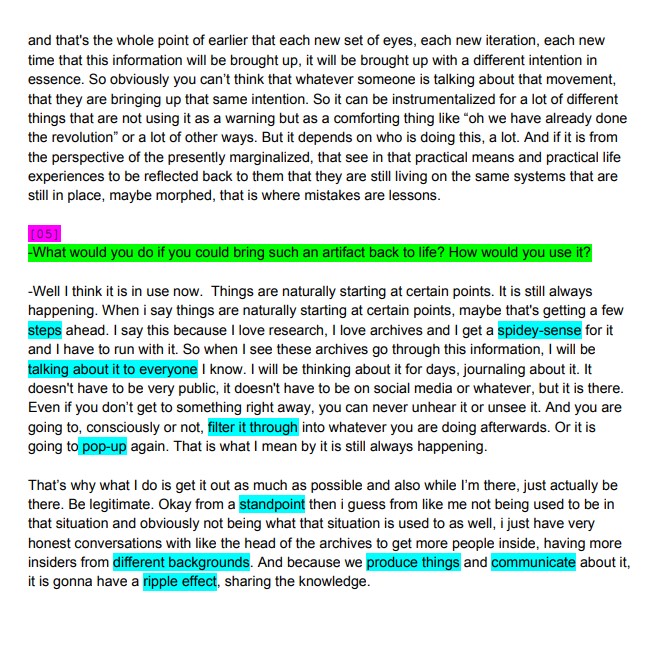 |
Then started some sort of Audio/Video/Interaction script to details the possible interactions, environments and items per sequence of the story.
|  |
|
From this I started to write the Interactions flowcharts, to help me later in the coding process. I try to detail every interaction and process in a logic syntax.
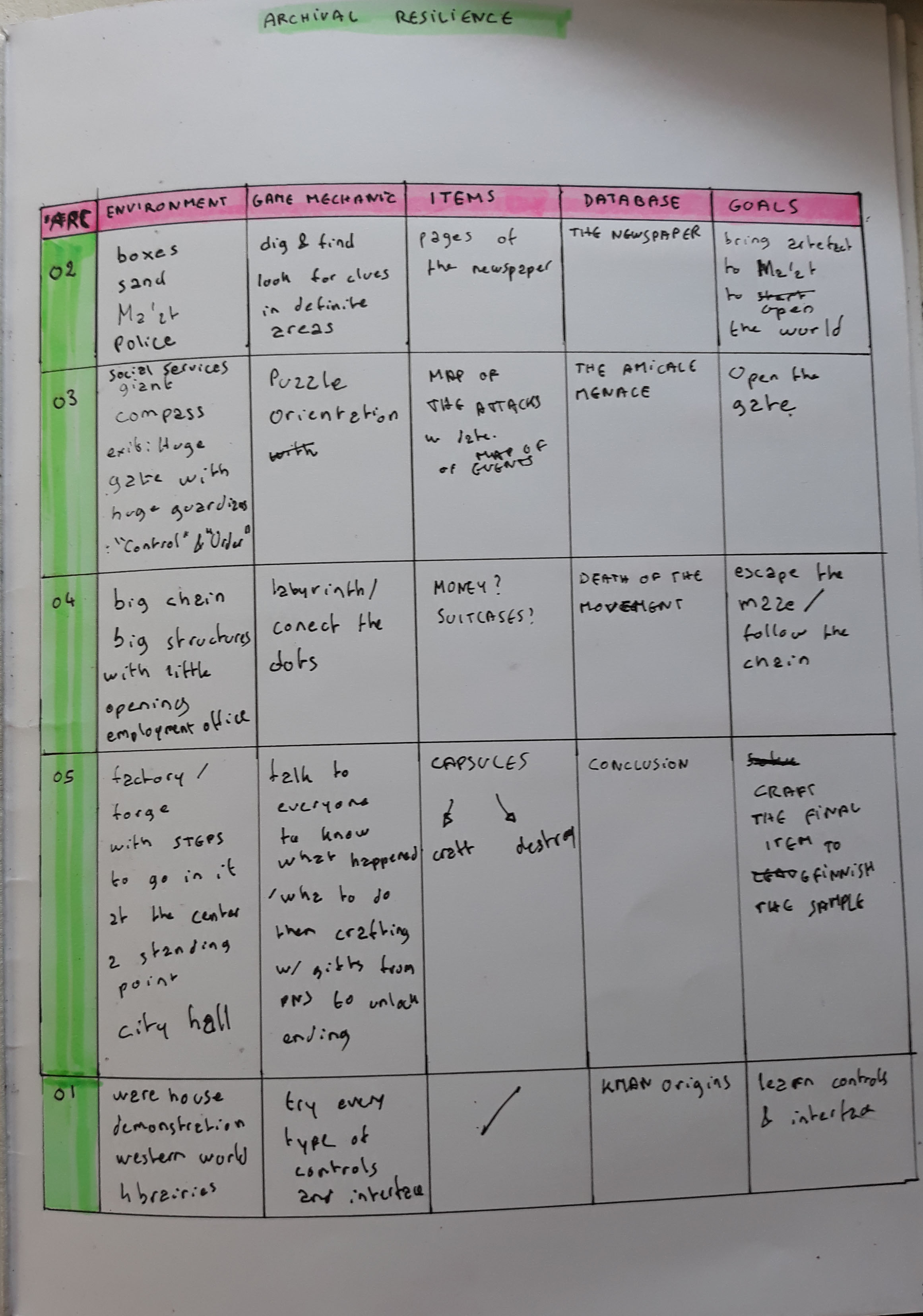 |
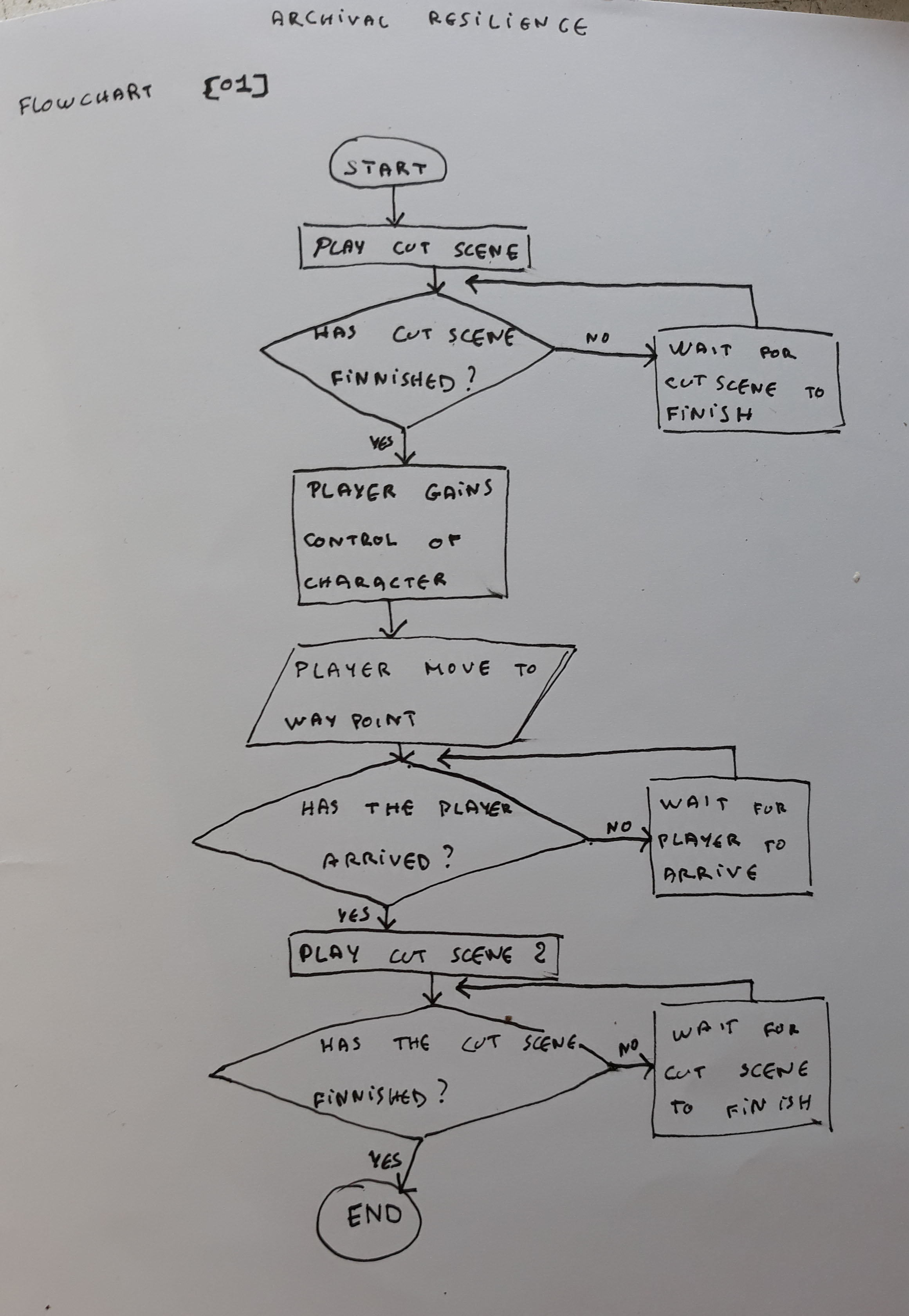 |
|---|---|
Then I finally start working on Unreal Engine and get to know the software and the bases of level design in it.
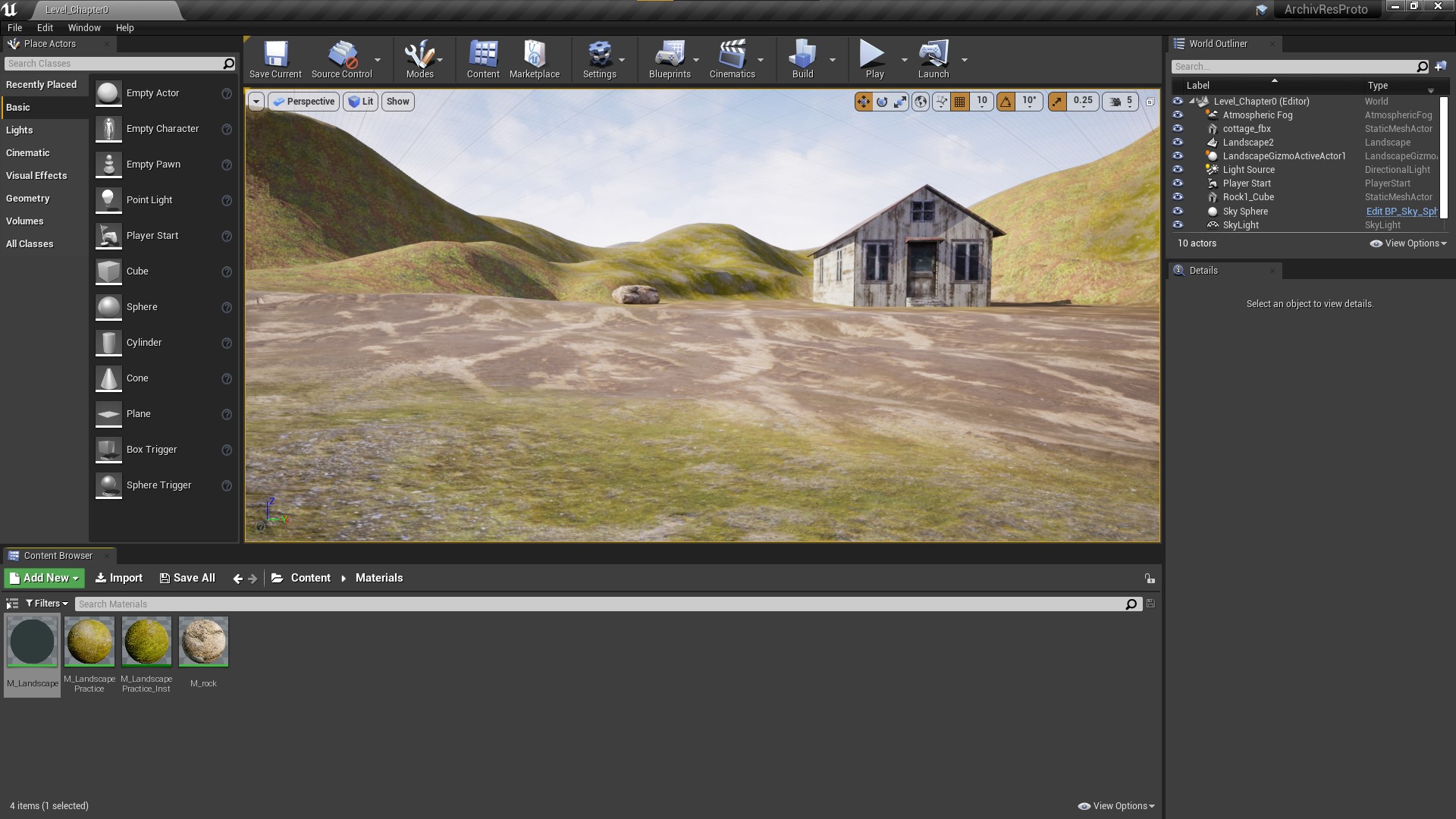 |
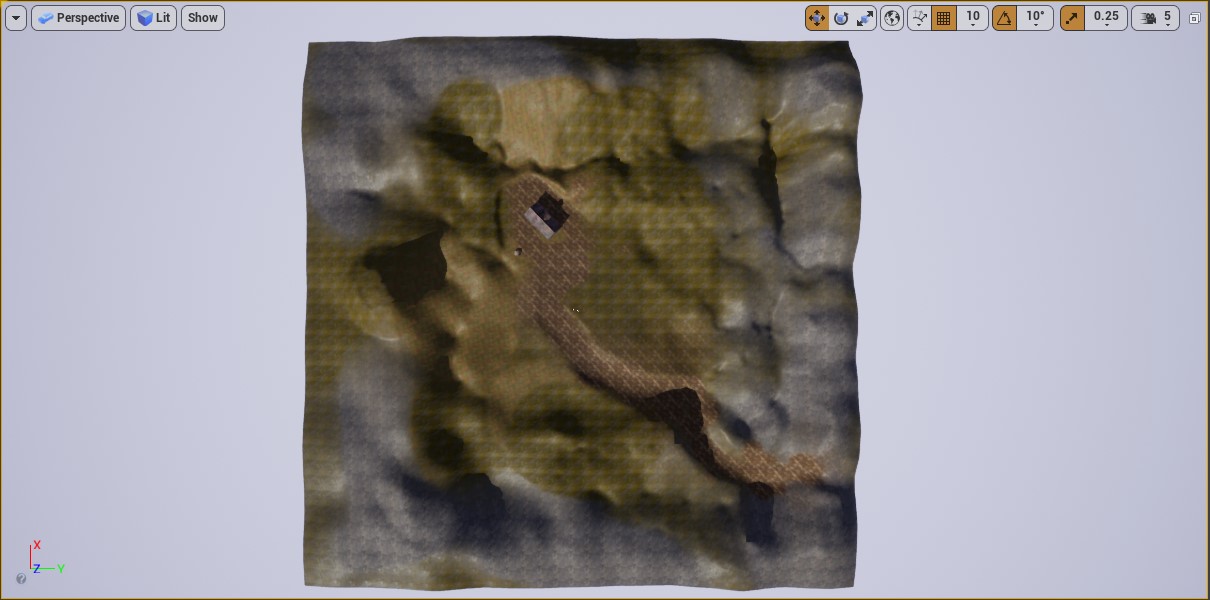 |
|---|---|
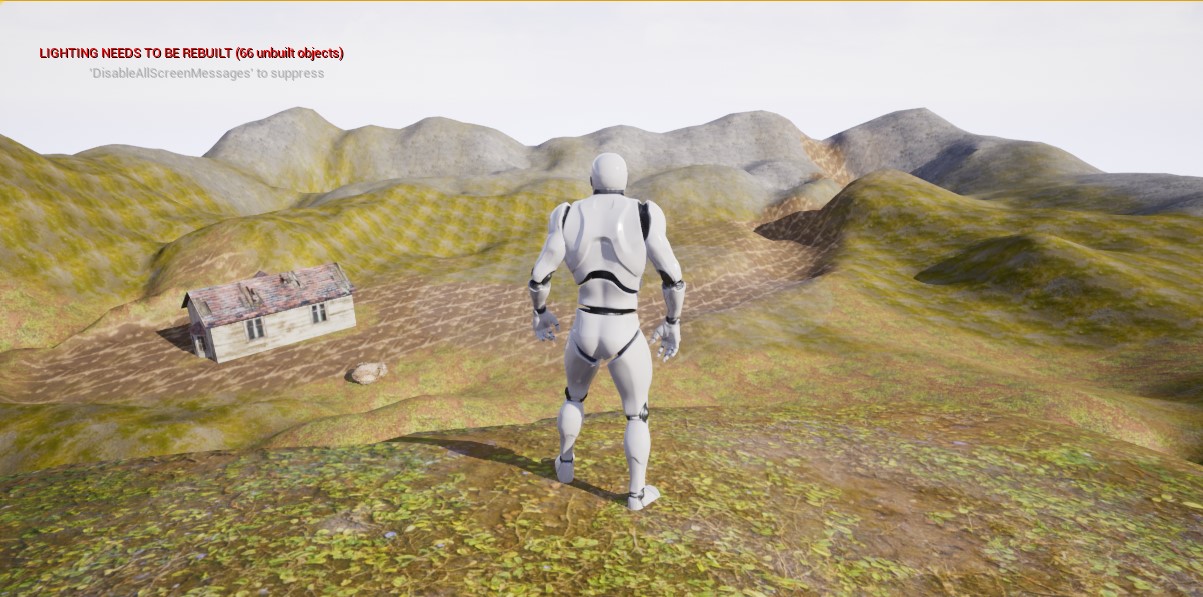 |
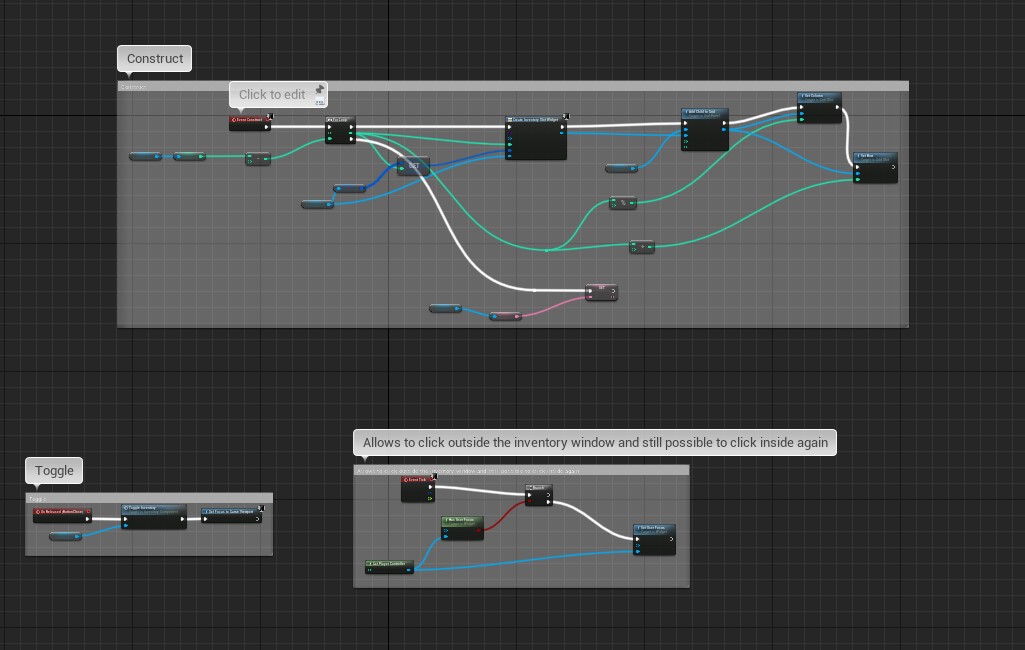 |
Once i got a grasp of this, I started to code the differents systems i will need: An inventory, a Quest Log, and Dialogue system.
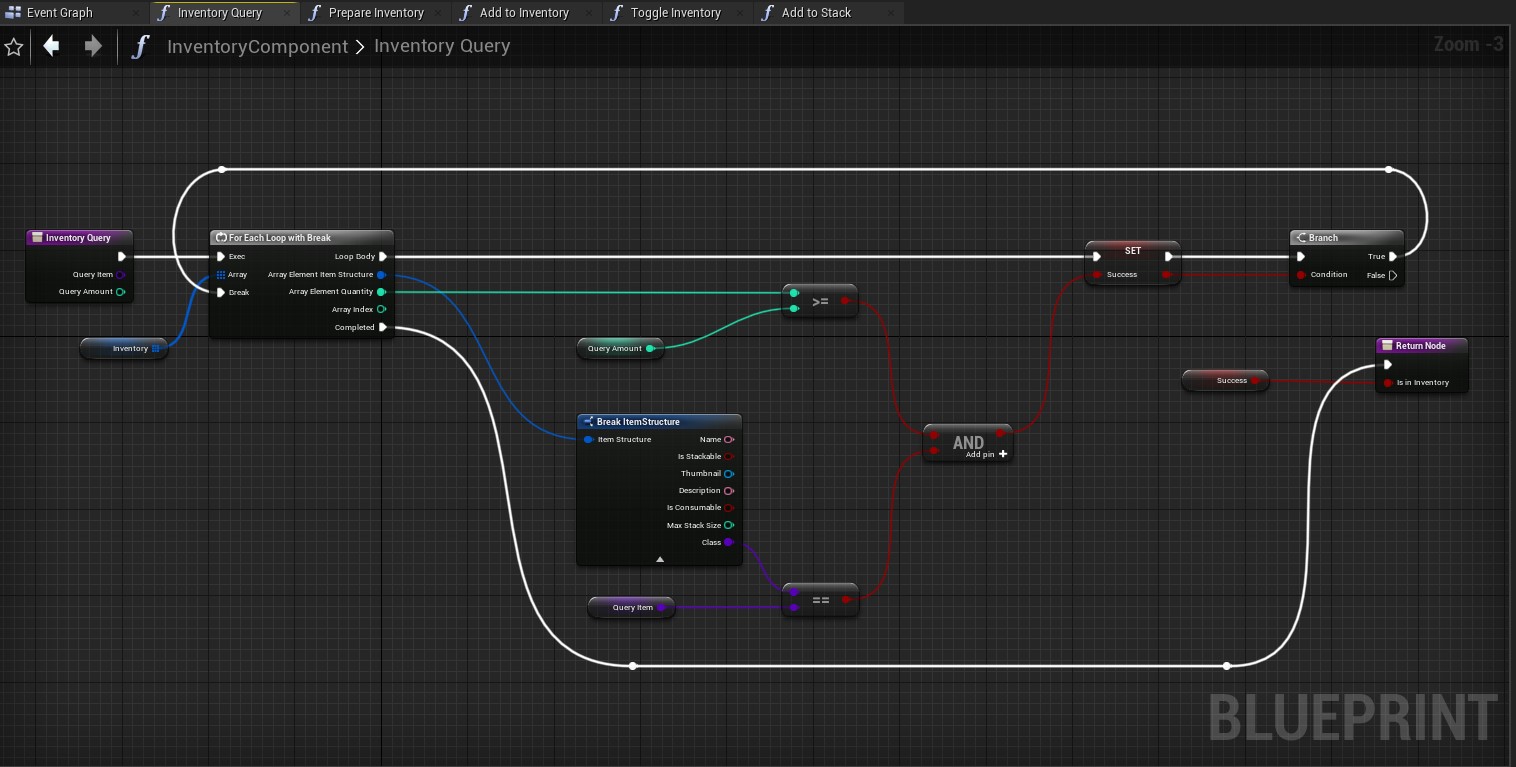 |
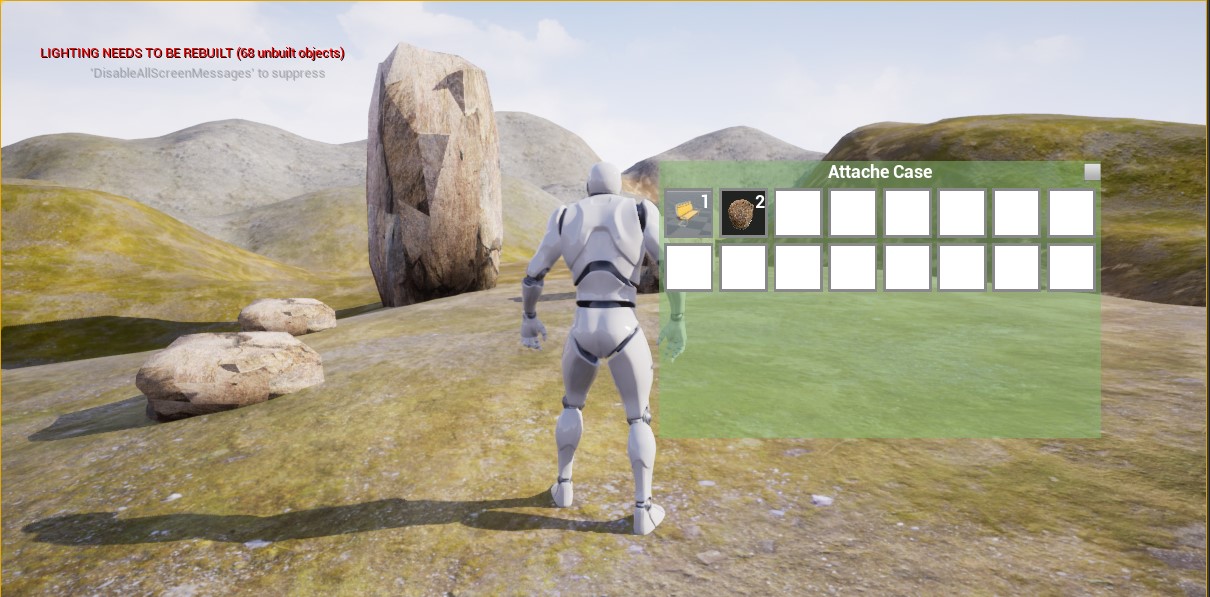 |
|---|---|
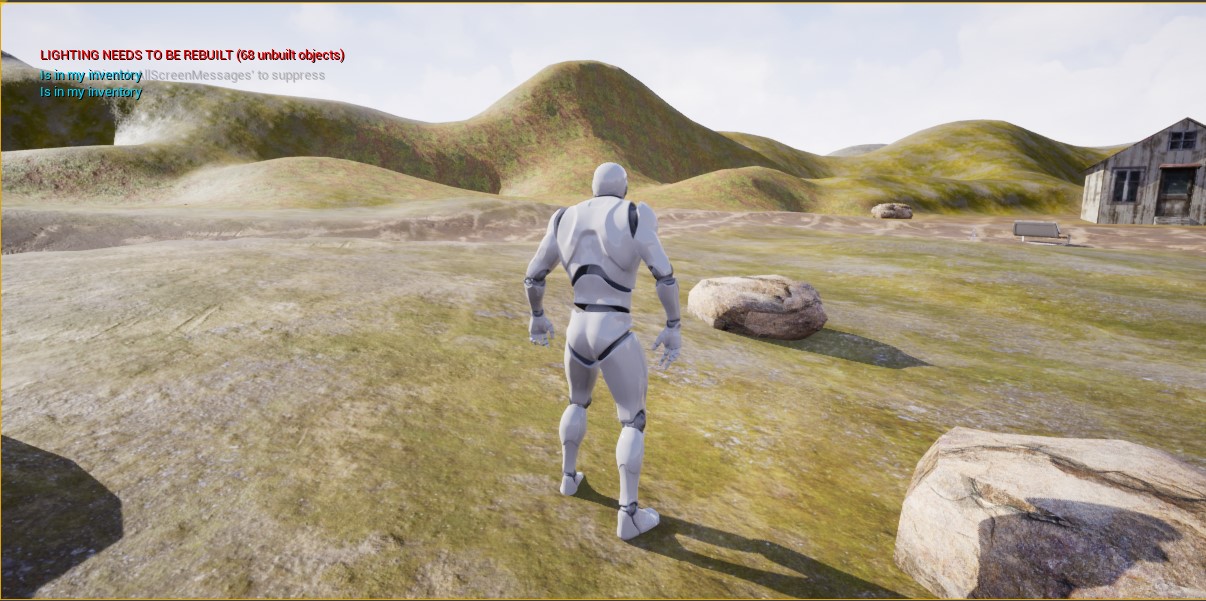 |
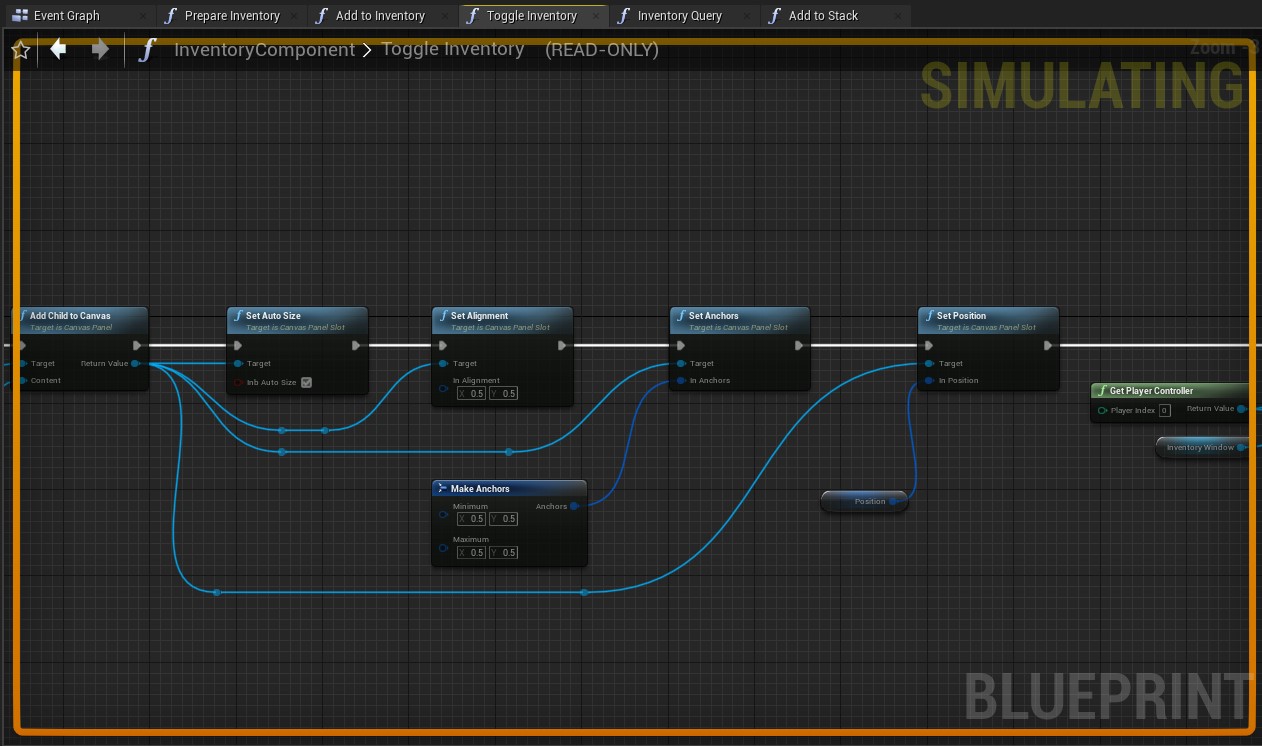 |
For the inventory, I need to be able to toggle it, stack items, consult the informations of each items and their quantity, close it. I also start to build a query system for the items in prevision of the quest log.
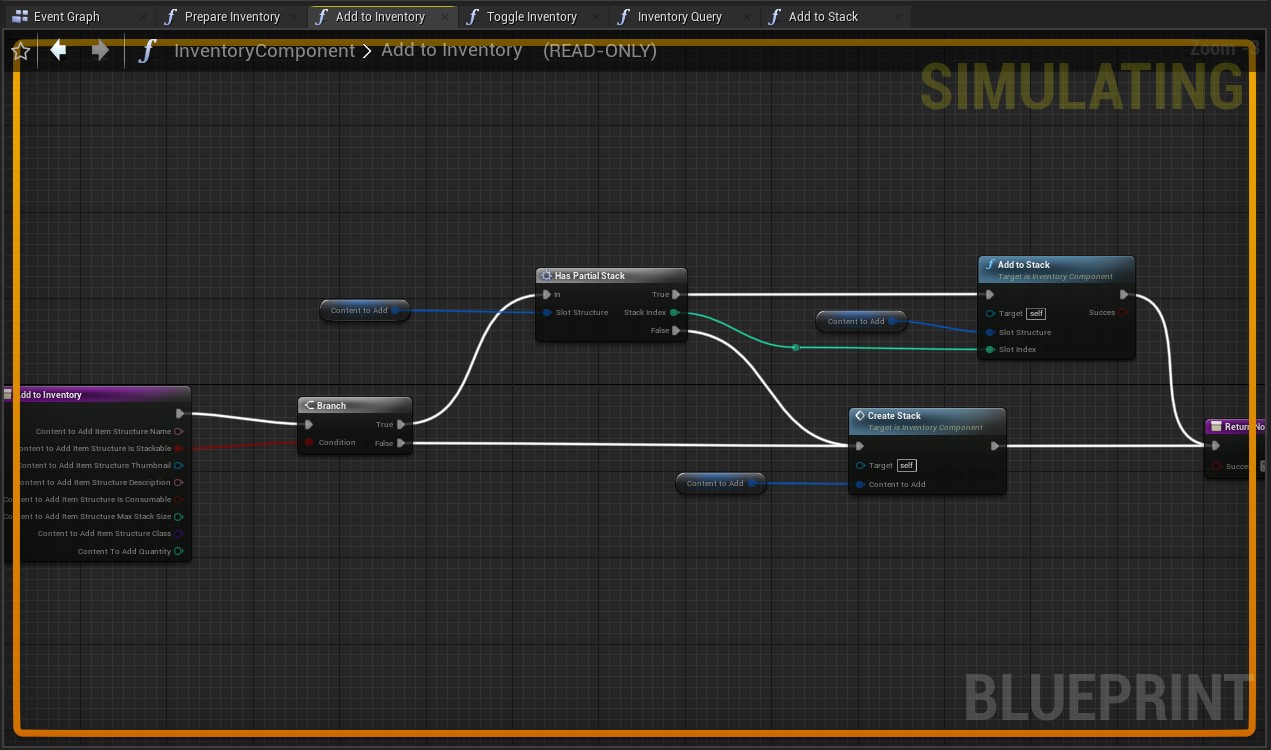 |
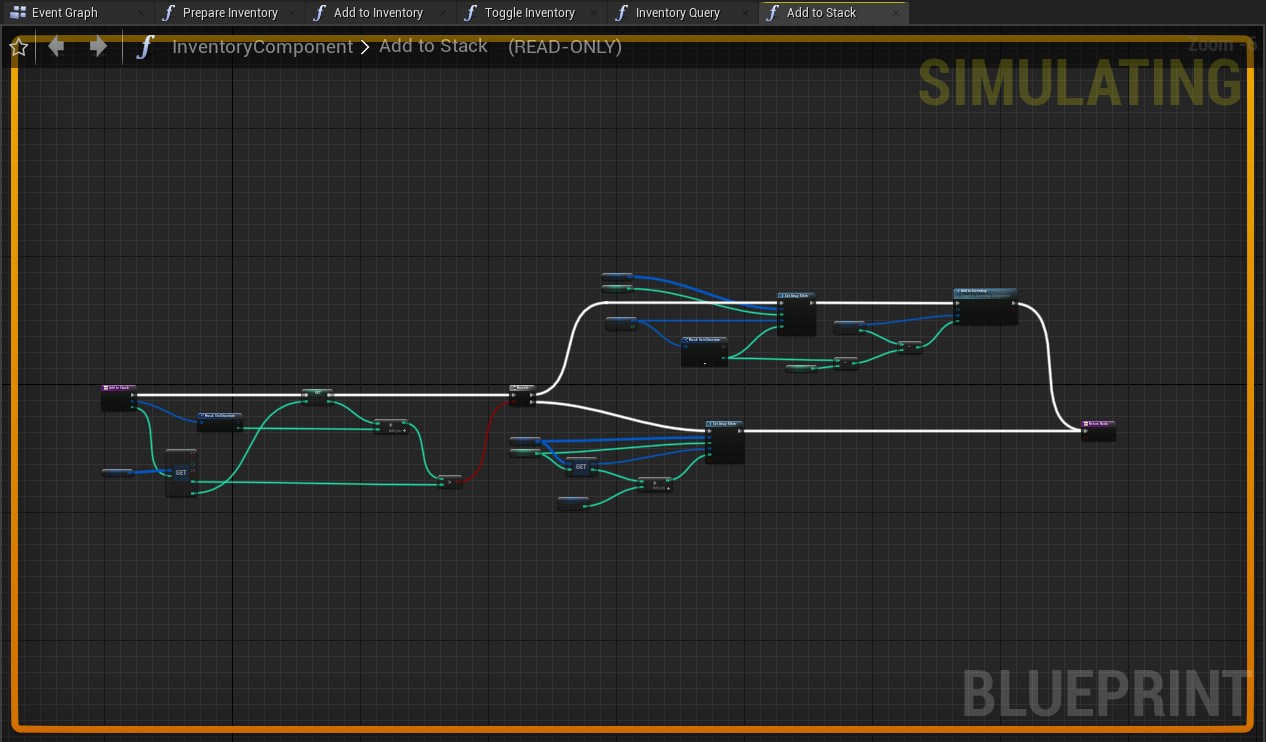 |
|---|---|
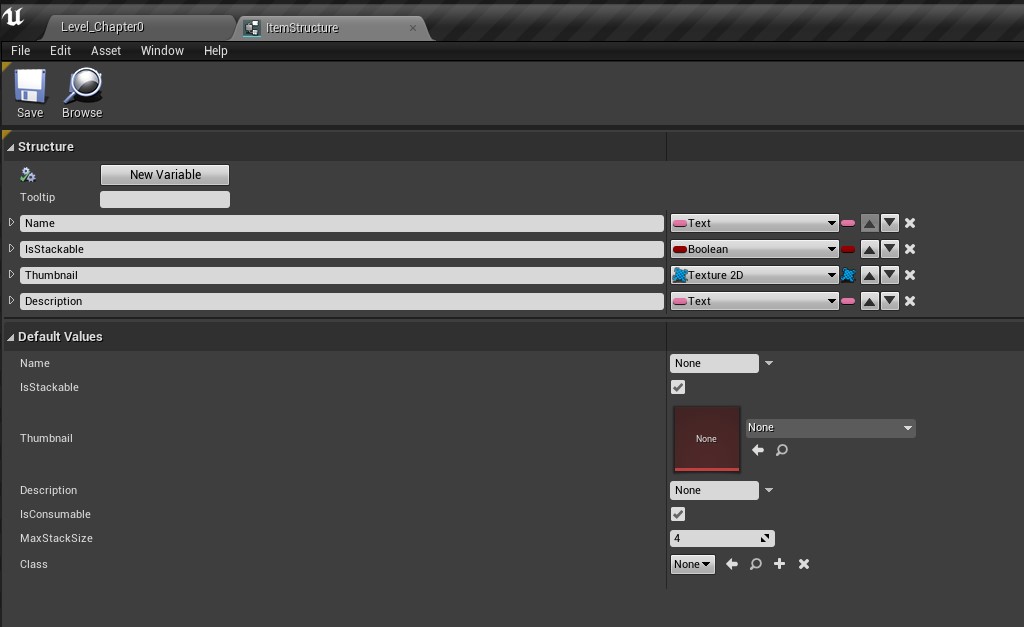 |
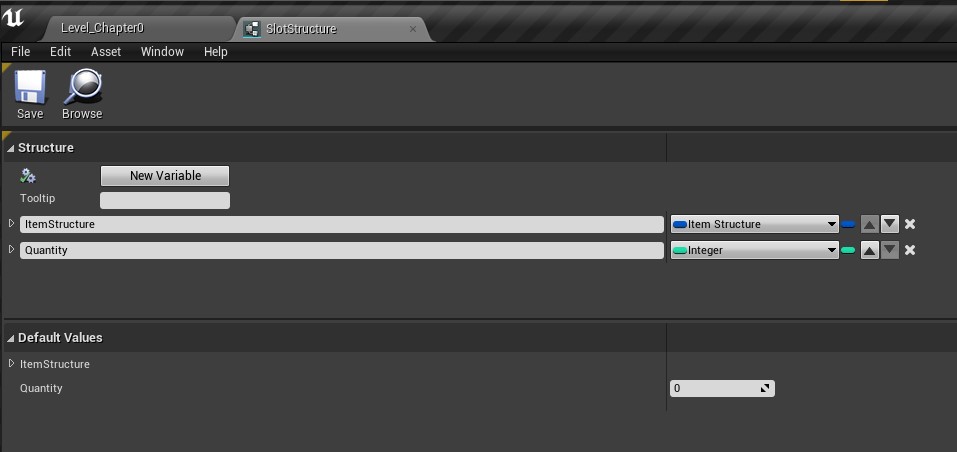 |
Then I start coding the Quest Log, by first creating the widget and viewport, then creating the types of quest, and the interactions with the environment to start or end a quest.
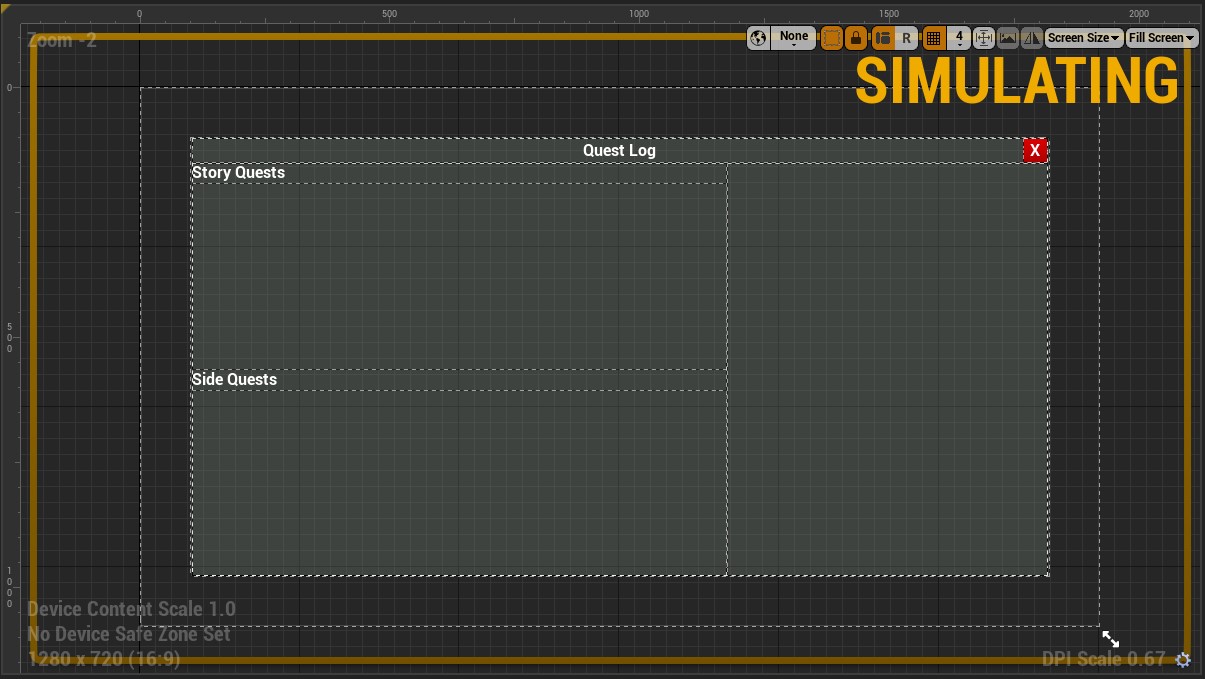 |
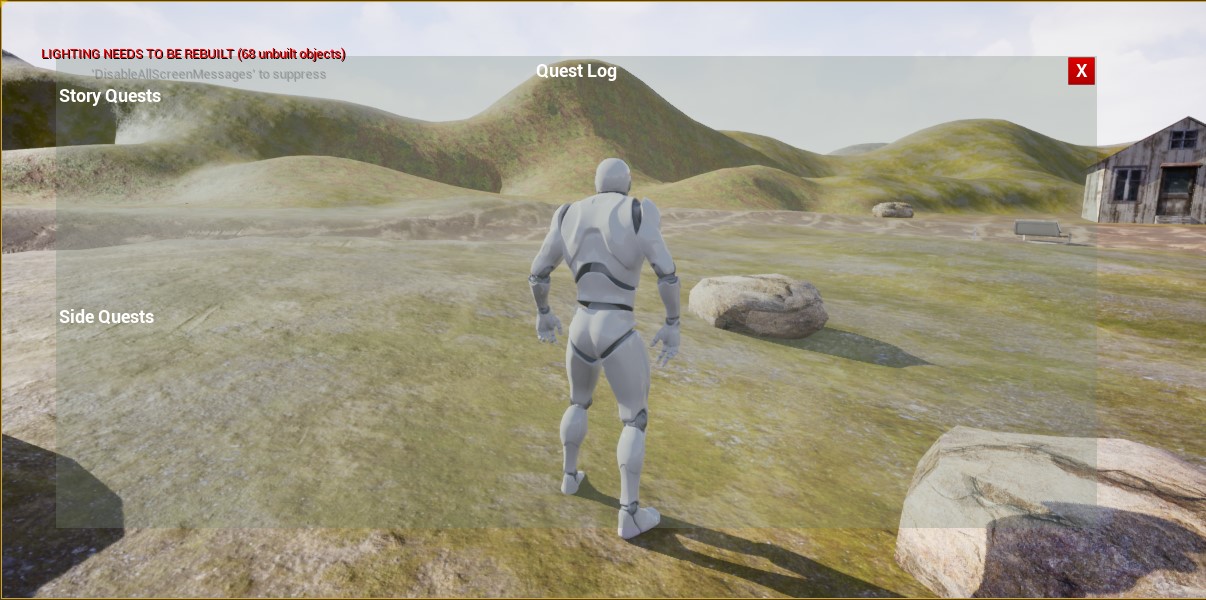 |
|---|---|
For the next step i went on developing the level design a bit more, trying to really bring the fantastical/metaphorical aspect of this landscape. I also change the mannequin to a new mesh, I wanted a casual character, easily identifiable.
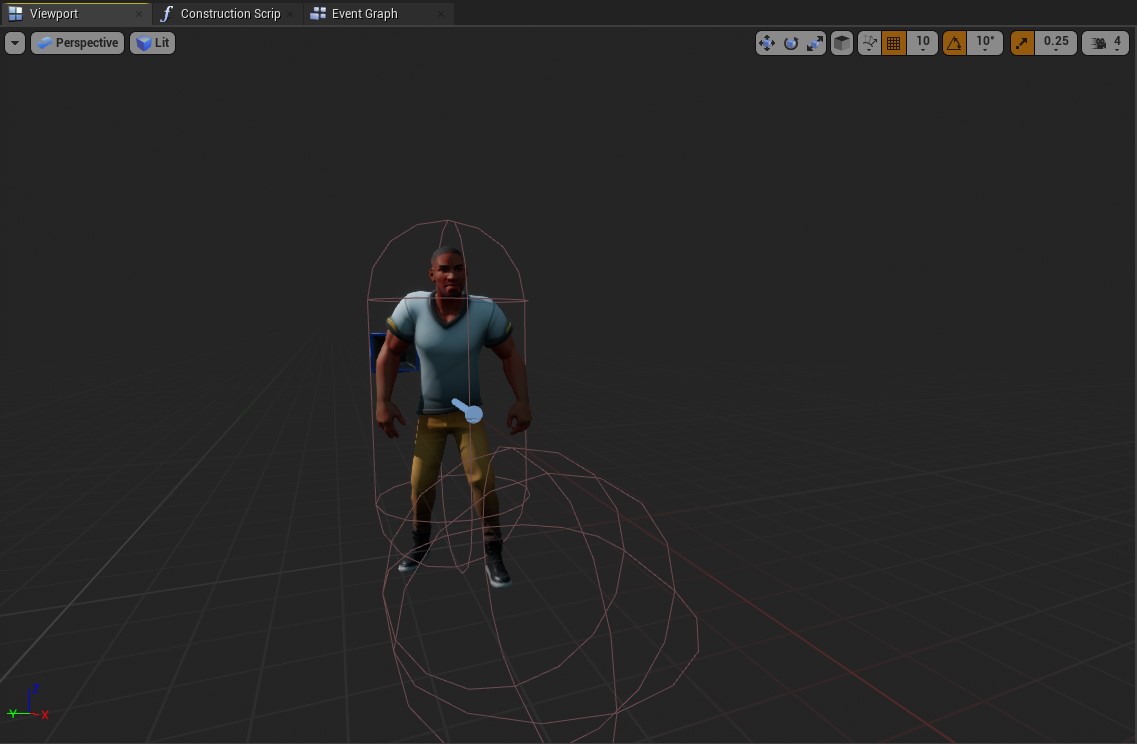 |
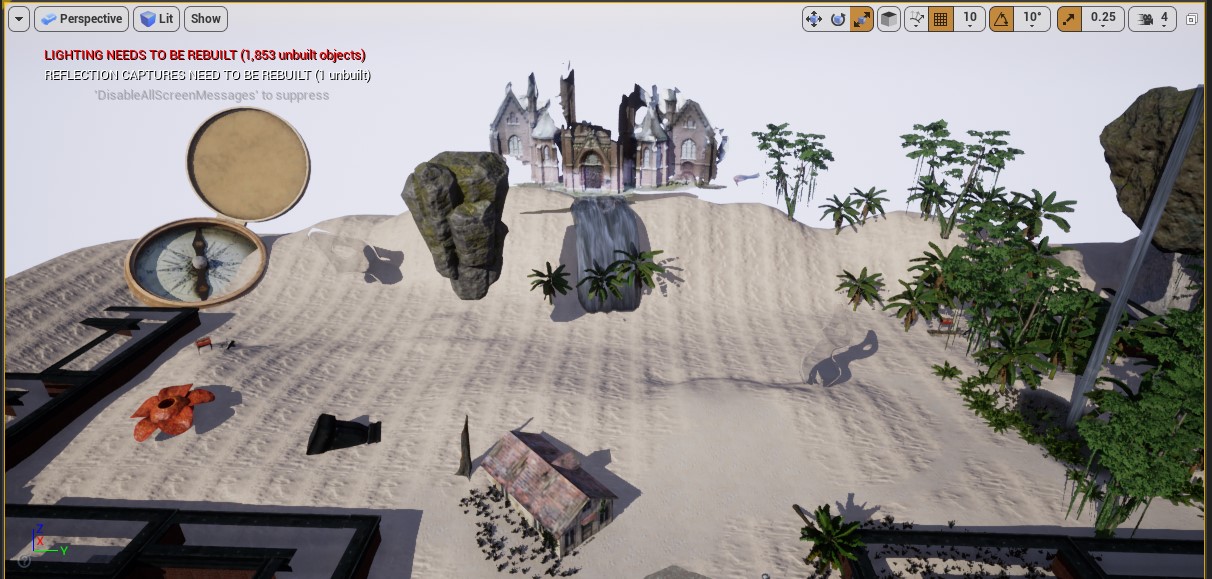 |
|---|---|
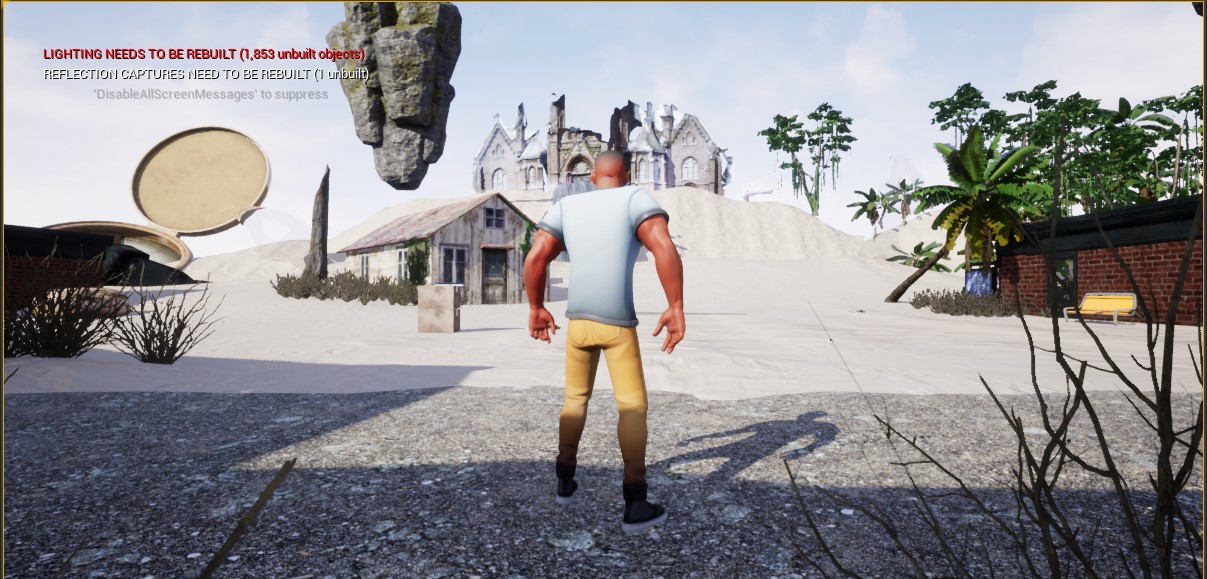 |
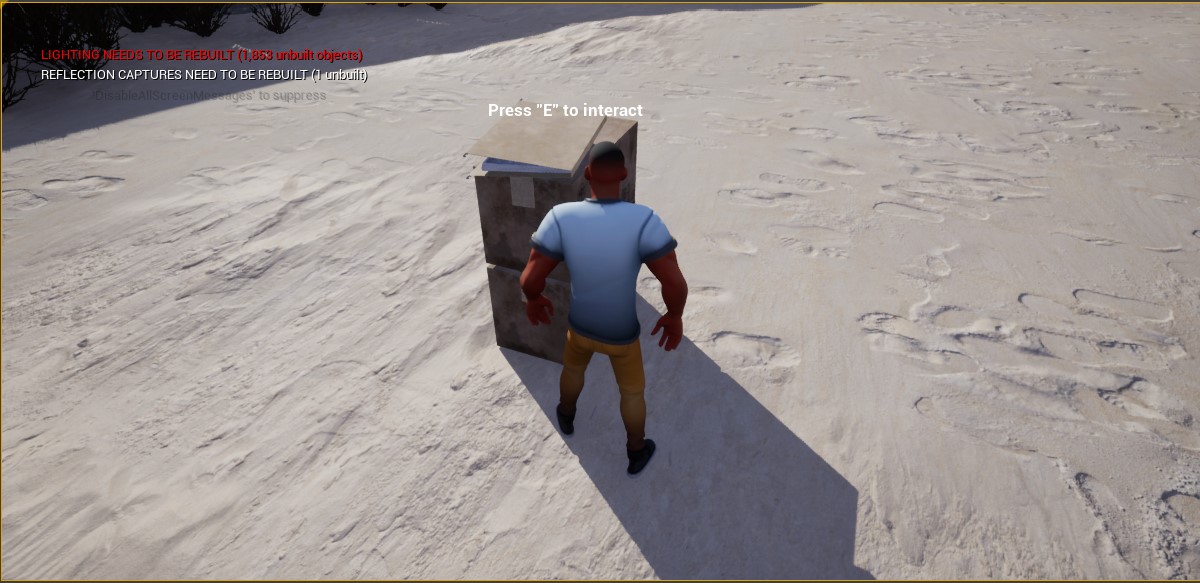 |
Then I imported an archive video and integrated it in the landscape, then creating an environment for the audio and set the volume attenuation.
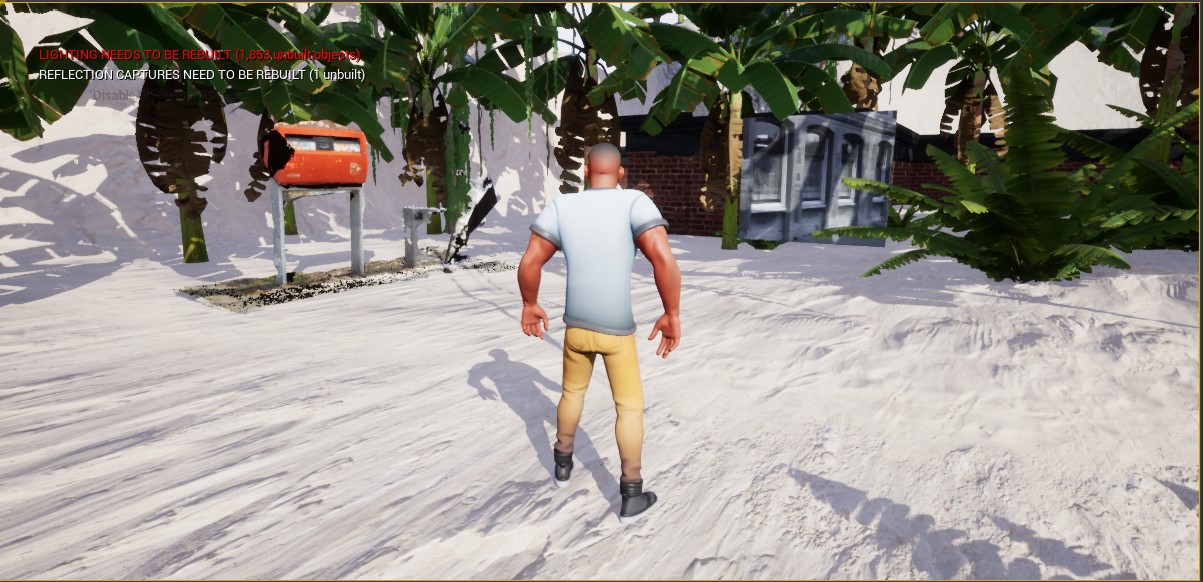 |
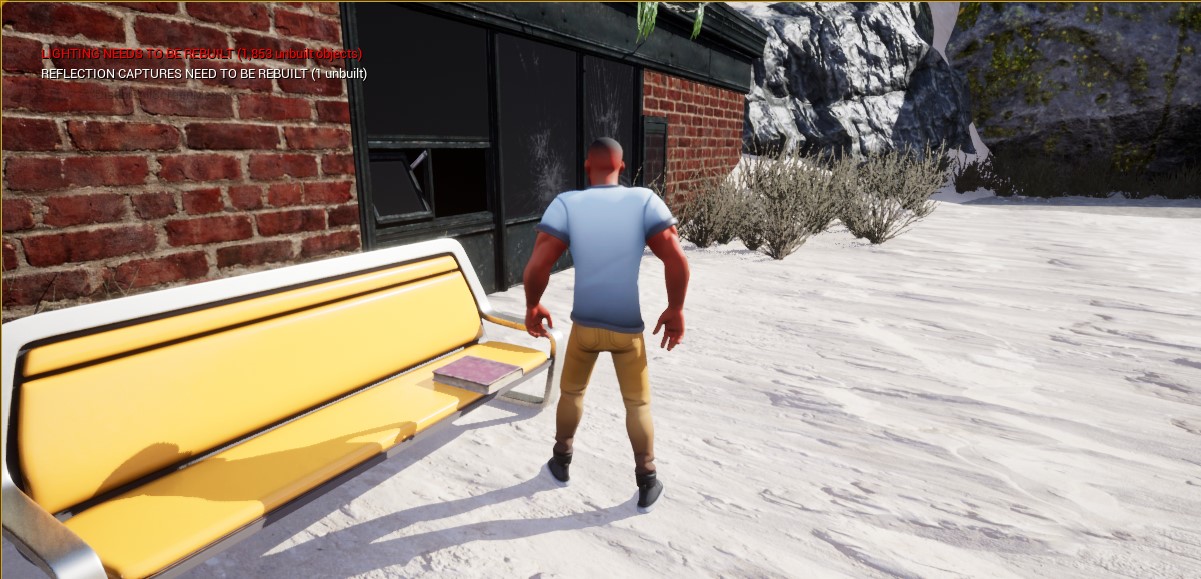 |
|---|---|
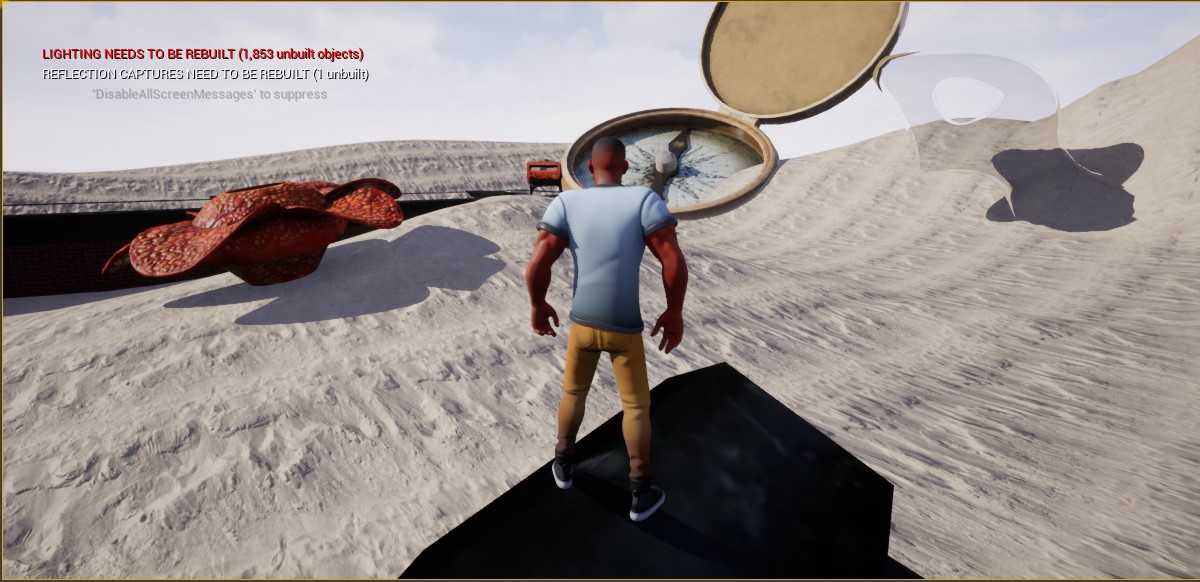 |
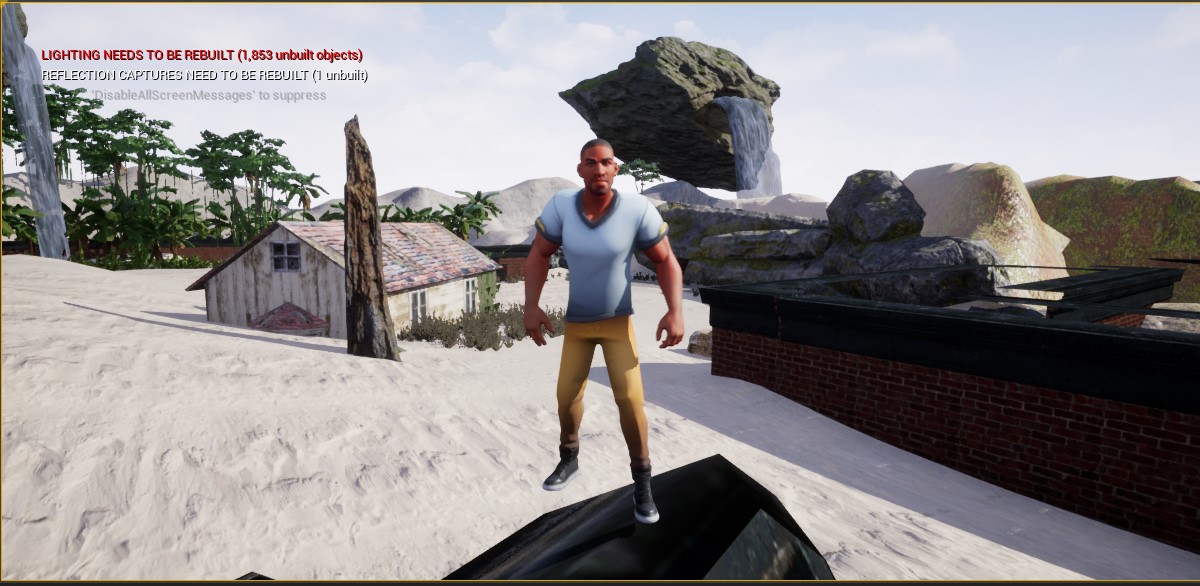 |
After this i tried to link the quest system to the dialogue system, to have a mor immersive gameplay. Sadly after hours of debugging using breakpoints, I couldnt figure what was missing but i got really close.
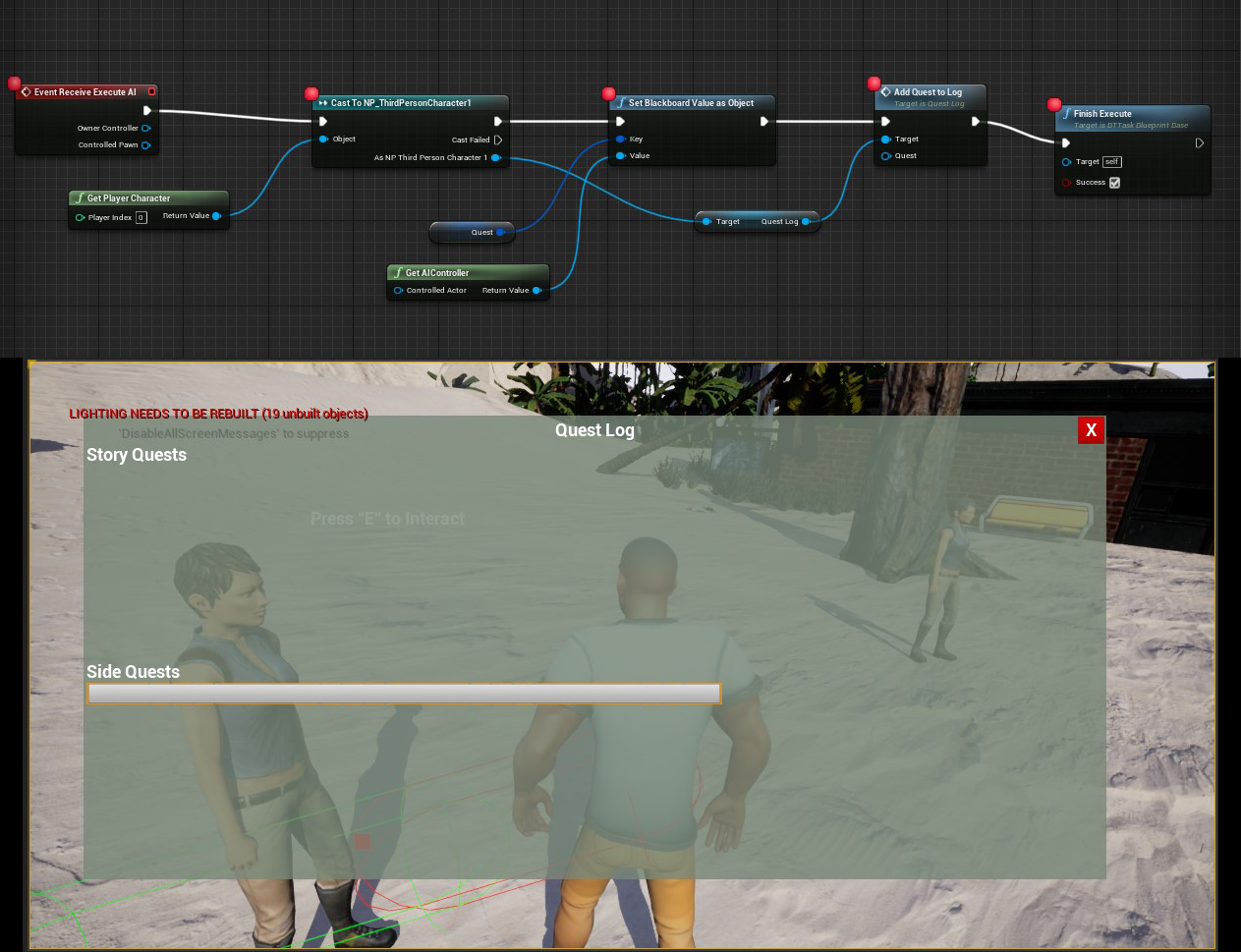 |
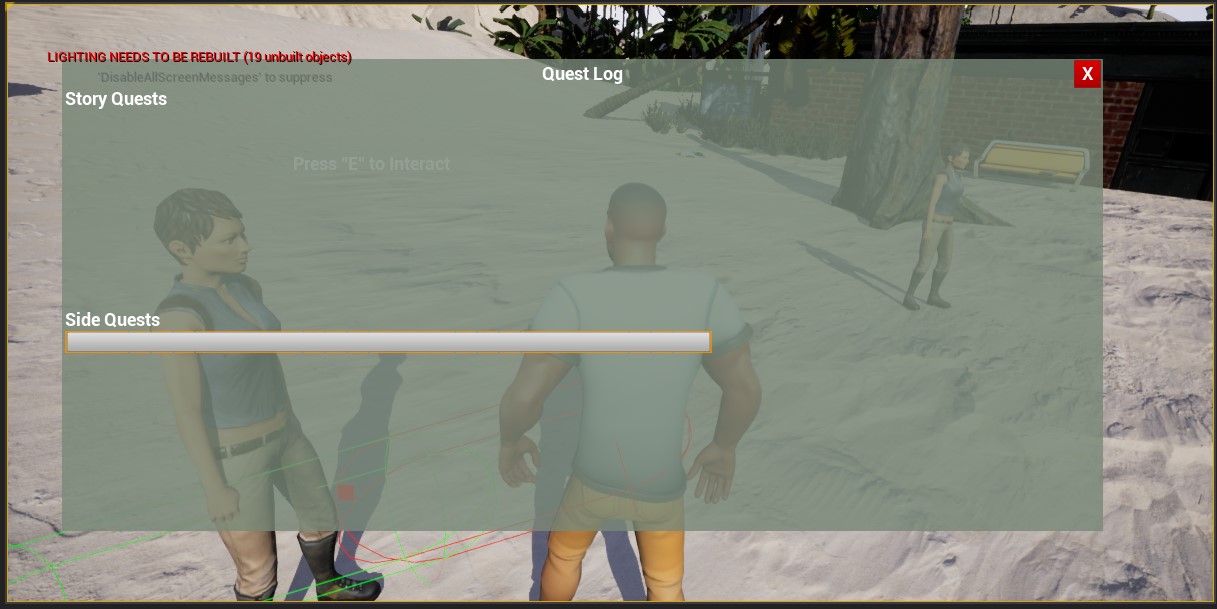 |
|---|---|
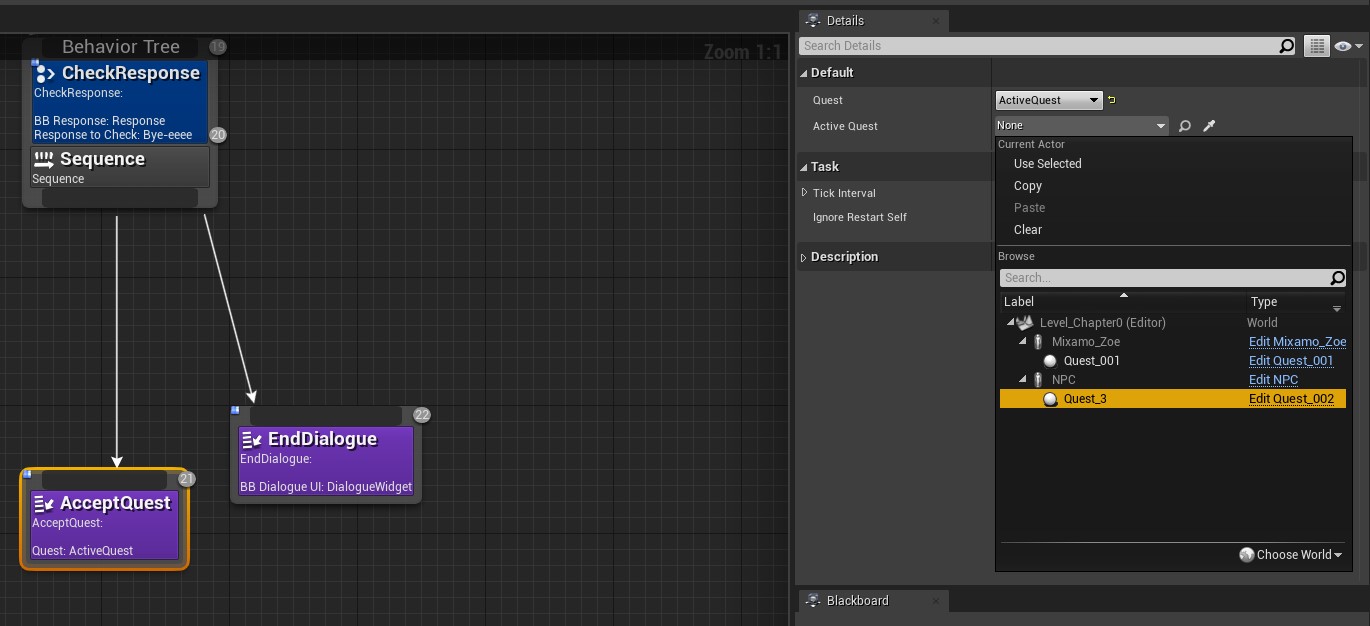 |
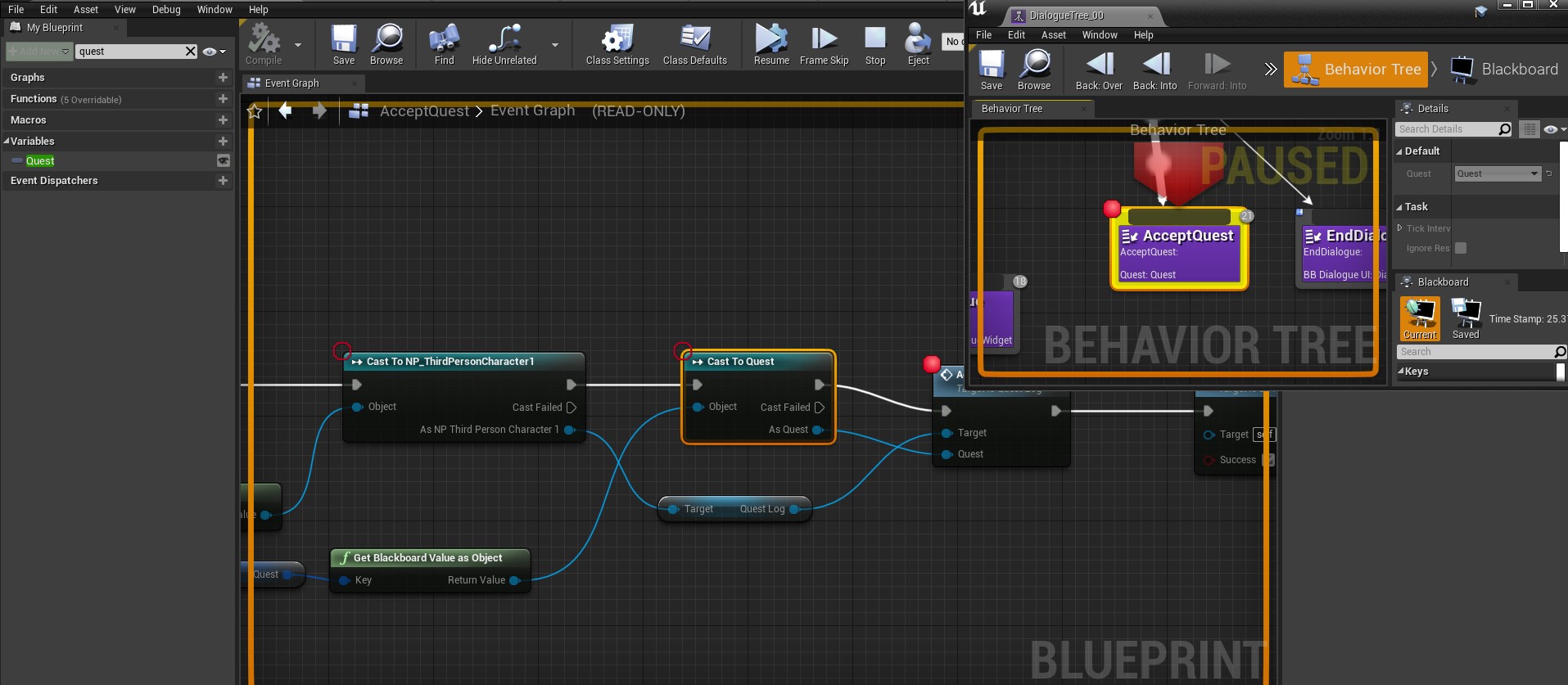 |
I finally start to implent the design in the UIs, changing the font, reframing instances, etc.... Make it look clean.
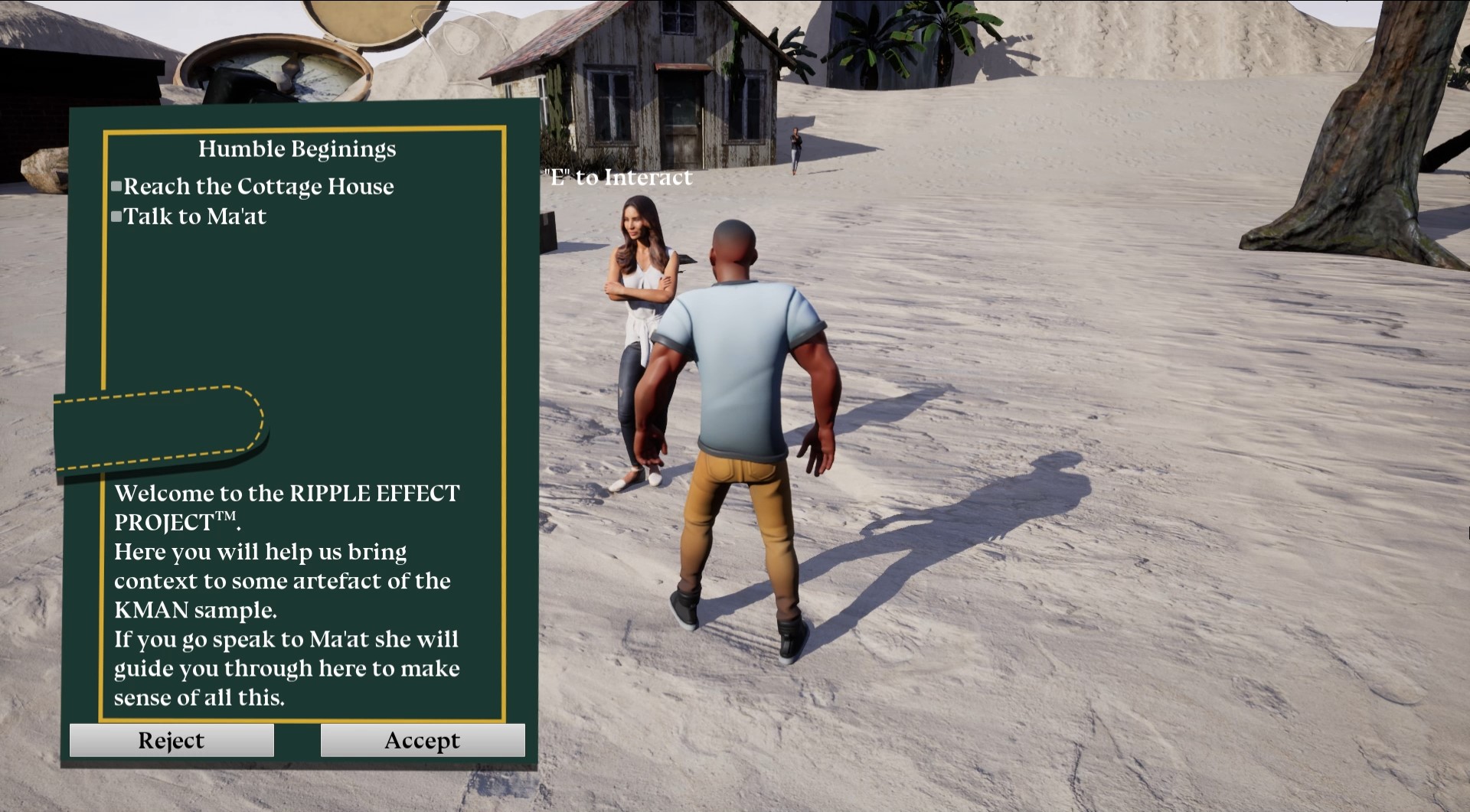 |
 |
|---|---|
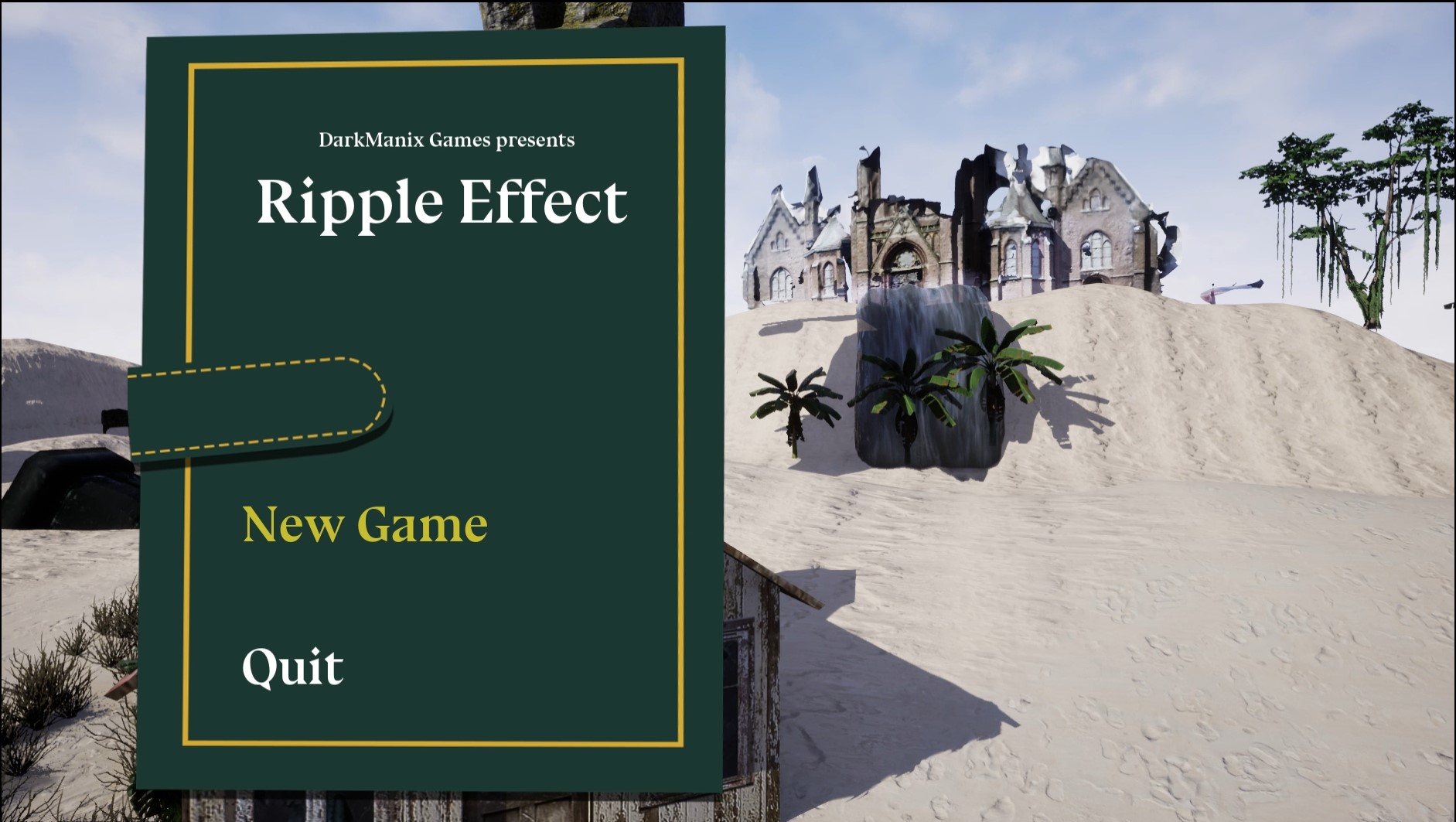 |
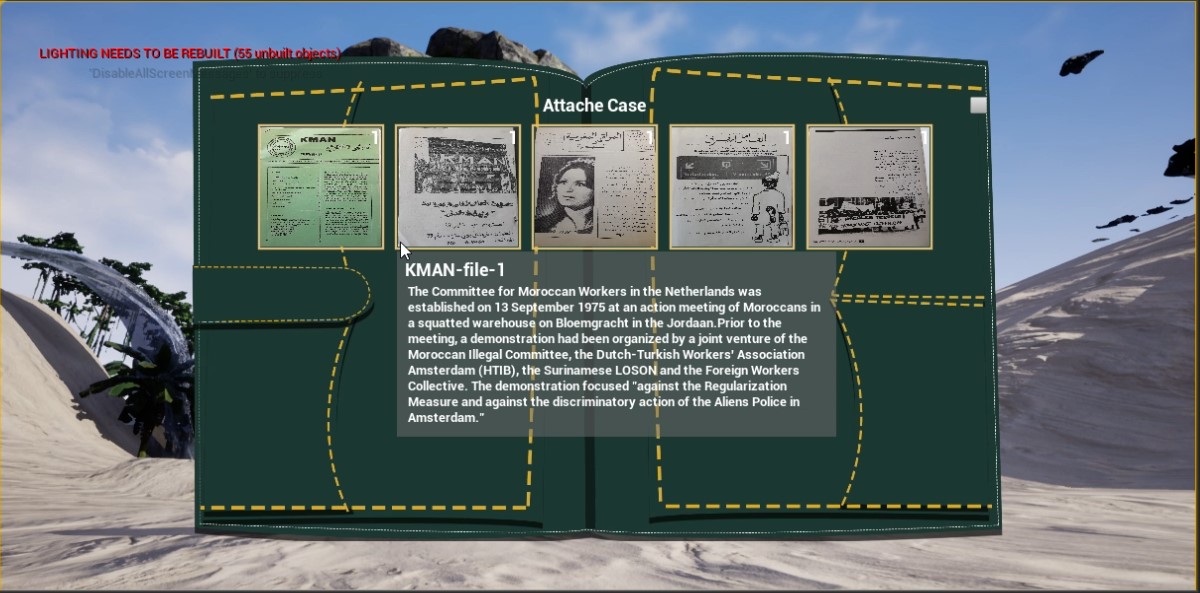 |
How do a social movement gets killed/silenced/assimilated by institutions ?
Exemple of the KMAN
As KMAN grew, and partly due to its open structure in which everybody was encouraged to take part in the decision making process, the organization began to be controlled by different factions that were operating within the organization for the benefit of outside organizations. As the factionalism grew worse and repression continued, groups became increasingly insular, leading to encapsulation. This is the process wherein a cadre of activists become isolated from the broader movement because they come to share many of the same habits and culture and their ideology becomes more similar to one another’s and at the same time more rigid. They become so dedicated to the movement that they fail to sympathize with those who do not make the movement the dominant aspect of their life. Likewise, potential recruits find it hard to penetrate the close knit group.
Another thing is that the organization becomes established with the mainstream. That is, their goals or ideologies are adopted by the mainstream and there is no longer any need for a movement. Collective bargaining rights are guaranteed by the government (in most cases) and the movement is now well established within the political system.
The outcome is a gameplay overview trailer, with the developper comments.
International Institute of Social History
Population by origin and generation, 1 January, The Hague: Centraal Bureau voor de Statistiek, 2009
Four stages of social movement, Jonathan Christiansen, M.A., 2009 EBSCO Publishing Inc.



